• Jim: Steep turns – not so
• Jim – Solo student overwhelmed
• Jannie:
• Peter
• Guy – How
• Megan – Human
• Catalyst Engine –




• Jim: Steep turns – not so
• Jim – Solo student overwhelmed
• Jannie:
• Peter
• Guy – How
• Megan – Human
• Catalyst Engine –



Featuring the Garmin 3000 Prime and largest touchscreen displays in its class, Professional has been redefined – introducing the brand-new PC-12 PRO.
Pilatus Centre SA
Authorised Sales Centre


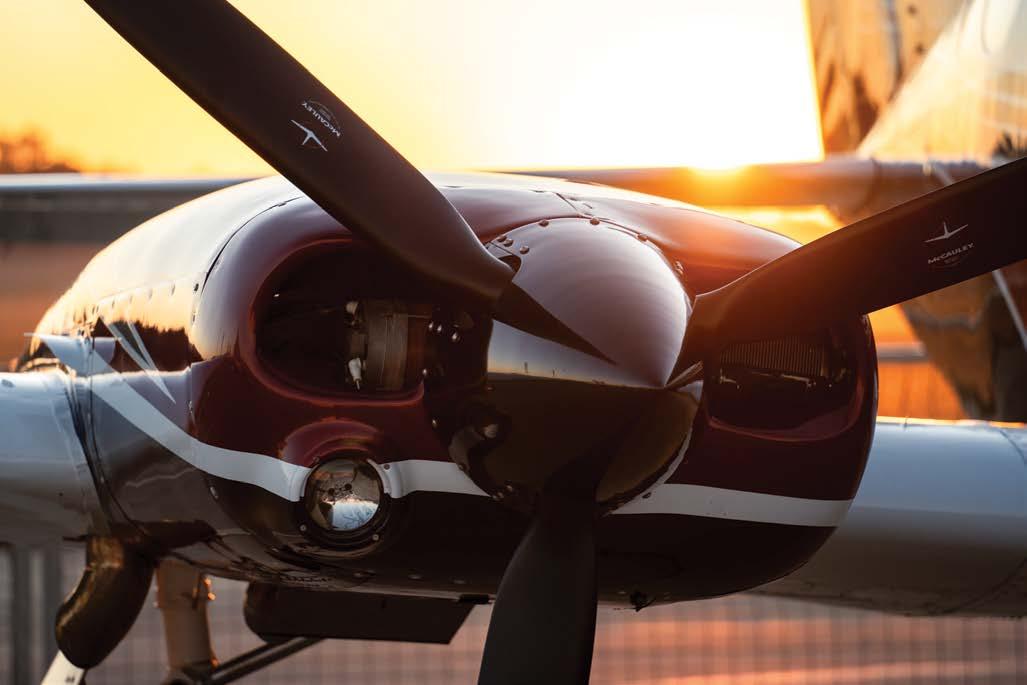




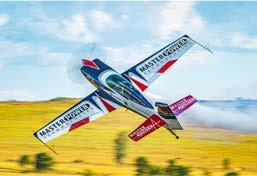



In the more than two decades since we introduced the GNS 430, we’ve continued to develop even more advanced capabilities to enhance your flying. The GTN™ Xi series, our fourth-generation GPS/ NAV/COMMs, leads the way with Smart Glide™ technology, coupled VNAV and missed approaches1 , intuitive traffic displays1, terrain and more. See the upgrade advantage at Garmin.com/Navigators.
SALES MANAGER
Kerry Matthysen
sales@saflyermag.co.za 082 572 9473
TRAFFIC
Kerry Matthysen traffic.admin@saflyermag.co.za
ACCOUNTS
Bella Leitch
bella@taxfinaccounting.co.za
EDITOR
Guy Leitch guy@saflyermag.co.za
PUBLISHER
Guy Leitch guy@saflyermag.co.za
PRODUCTION & LAYOUT
Emily-Jane Kinnear design@saflyermag.co.za
CONTRIBUTORS
Jim Davis
Peter Garrison
Hugh Pryor
CONTRIBUTORS
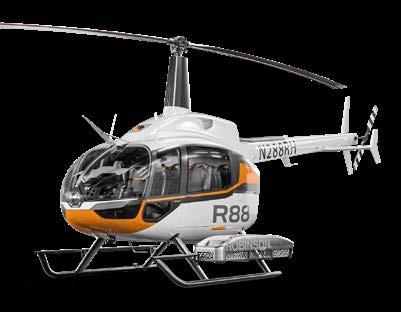
John Bassi
Morne Booij-Liewes
Laura McDermid
Darren Olivier
Jeffrey Kempston
ILLUSTRATIONS
Darren Edward O'Neil
Joe Pieterse
WEB MASTER
Emily-Jane Kinnear


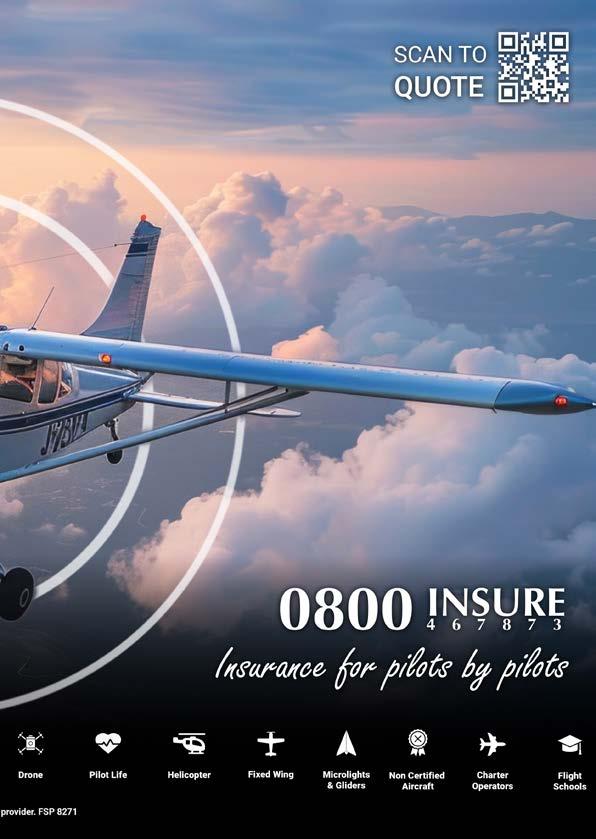
At the end of March, Roger Foster retired from a stellar career as the Chief Executive and Managing Director of Airlink.
IT his swansong speech, Rodger looked back at the launch of the airline in 1992. The risks and the vision required to start the airline are still a salutary lesson for us all today. Given the political uncertainty of the time, it was an incredibly brave decision.
Rodger said that in 1992, SAA dominated the domestic market with 90% of the traffic. Furthermore, investment in any business was tough, as inflation and interest rates were around 14% and GDP had shrunk by over 2%.
Rodger says, “Airlink launched with a handful of small piston and turboprop commuter planes and a target to carry 100,000 by the end of our first trading year. We surpassed the target. Today we operate a fleet of over 67 jet aircraft. We are on track to operate 83,000 flights –about 250 a day - and to carry 4.5 million customers this year.
That Airlink survived and thrived from this extraordinarily difficult launch environment is testimony to Foster’s vast skill as an airline manager. Rodger attributes the airlines survival to three factors: Maintaining a strong balance sheet, forging lucrative airline partnerships, and supporting staff

in building a strong balance sheet. He says the airline has been, “very conservative when it comes to expanding our route network when others had been more aggressive on growth, which later came to stretch them past breaking point.”
The biggest test of the airline’s resilience was the Covid-19 pandemic. The investment in a strong balance sheet enabled the airline to retain all its staff throughout Covid. “This is testimony to our attitude to staff in terms of looking after them, their best interests all the time, but also up-skilling them,” Rodger says.
In 2001 Airlink presciently entered into a franchise arrangement with SAA. It worked well for both parties the agreement ended in 2020, when SAA was forced into business rescue. Foster states that SAA owed it R890-million and unflown air tickets before SAA went into business rescue in December 2019.
Foster says that it was time for the franchise to end. “It was a blessing in disguise as the termination of the franchise agreement meant that we are now free to do what we want, and we’ve been able to grow the business,” he said.
In August 2024, Qatar Airways acquired a 25% equity stake in Airlink, which injected further capital into the airline.
Rodger Foster’s shoes will be hard to fill. The airline’s Chief Financial Officer, de Villiers Engelbrecht, takes over as CEO from 1 April 2025.
j
Rodger is particularly proud of his steady investment
The powerful H125 is reliable, comfortable, safe and cost-effective. With its lifting power capacity, endurance and manoeuvrability, the H125 is always up for the most rigorous high and hot missions and sling work (cargo- swing load capacity: 1,400kg / 3,086 lb).
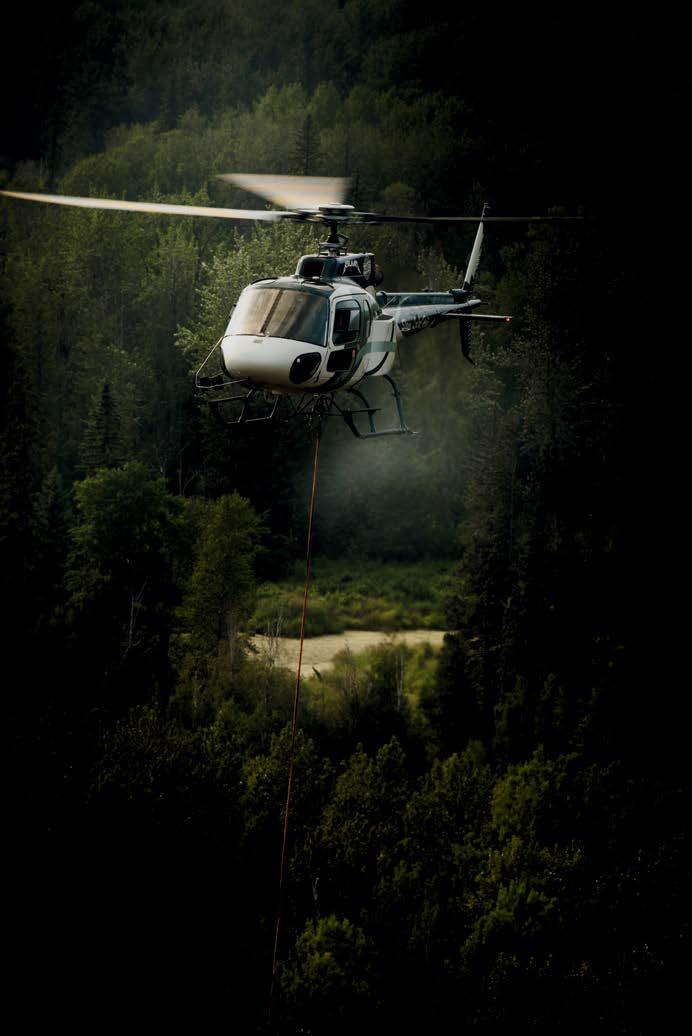

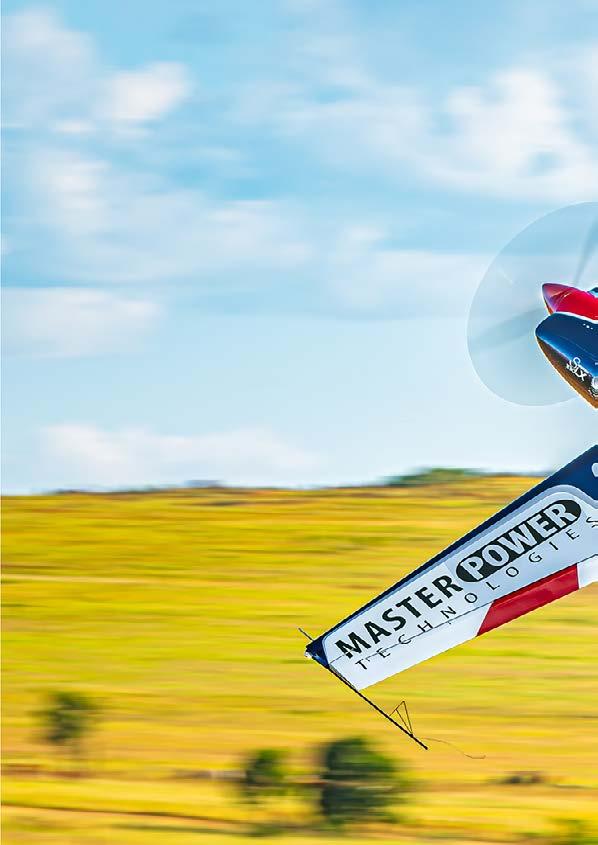
THE knife edge low pass has become a staple of airshows – so it takes a particularly striking photo to catch peoples’ attention. Longtime airshow photographer Pieter Cronje has managed this feat with this perfectly panned shot of Jason Beamish flying his Extra at the Aeroclub Airweek.
Pieter used a Nikon D500 with a 200-400mm lens at 200mm. To capture the sense of movement, the shutter speed is a commendably low 1/125th with an aperture of f6.3. Like many experienced photogs, Pieter overexposed the image, in this case by a full f-stop. Photoshop helped make the colours pop.

The new PC-12 Pro is certificated and ready for sales.
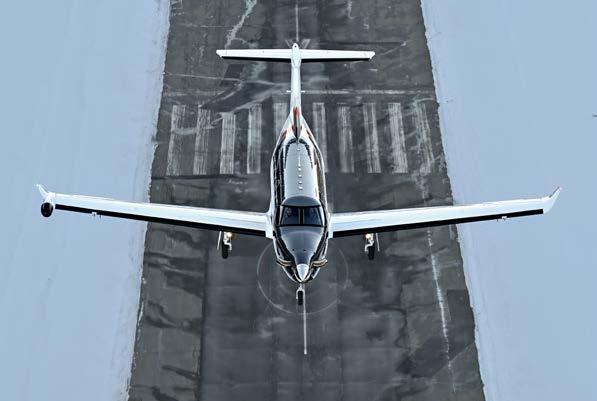
Pilatus has launched the latest iteration of its vastly successful PC-12: the PC-12
THE PC-12 Pro was revealed on 14 March, and Pilatus says the PC-12 Pro is certificated and ready for sales.
“The PC-12 Pro is certified by both EASA and FAA and the aircraft is available. We are very happy with the preorders that are already booked,” Zimmermann adds, citing a $6.8 million “average” purchase price.
The PC-12 Pro features
significant upgrades, including new Garmin touchscreen avionics, auto-land, flight-control safety updates and an updated cabin. Pilatus vice-president of business aviation Andre Zimmermann calls the aircraft “the most progressive, proven and professional PC-12 ever”.
The most-notable changes are in the cockpit which moves from Honeywell to the increasingly market dominant Garmin avionics suite.
Honeywell supplied avionics for
the previous PC-12 NGX model introduced in 2019, but now Pilatus has switched to Garmin’s G3000 Prime avionics suite.
“We dramatically changed the cockpit – new displays, amazing resolutions,” Zimmerman says, adding that the G3000 Prime package is “not off the shelf” but rather “directly tailored to the PC-12 Pro”.
Shifting to Garmin means the aircraft has “completely new software, different architectures, much faster data processors, higher-resolution displays and an enhanced turbulent-tolerant graphical interface”, says Matthew Hartkop, Garmin’s lead for experimental test flights.
As part of the cockpit update,
Pilatus gave the PC-12 Pro a “new auto-throttle system [that] is linked to flight envelope protection,” says Pilatus head of engineering and deputy CEO Bruno Cervia. “The [system] monitors both over- and under-speed, even with autopilot engaged, to make sure there is always continuous safe flight”.
Garmin’s auto-land feature is also available on the PC-12 Pro. That system recognises “if the pilot is incapacitated and automatically selects the safest airport to land”, Cervia adds.
Pilots are now presented with three 14 inches main touchscreen displays that have “hand stabilisation” technology intended to ensure precise control even during turbulence. Both pilots and co-pilots can manipulate their screens independently. The system includes two 7 inch displays mounted on the centre pedestal, and a mouse that lets pilots work the avionics without touching the screens.
Pilatus also gave the PC-12 Pro new control yokes, similar to those found on its PC-24 jet.
The PC-12 Pro’s cabin has been updated to include a natural wool carpet, new cabinet designs and improved storage capacity, says Pilatus director for product management Flavia Vianna.
Performance is unchanged. The PC-12 Pro cruises at up to 290kt (537km/h), has a 30,000ft ceiling and maximum range of 1,830nm (3,389km).j


THE engine’s FAR Part 33 certification involved more than 23 engines and more than 190 component tests. The test engines have completed more than 8,000 hr. of operation, GE says.
“Catalyst is the first, new centerline, clean-sheet advanced turboprop of the 21st century and the first turboprop engine to be certified to the latest standards, which include more than 20 significant new requirements,” GE says.
“The purpose of a development program is to fully mature the airframe and systems to the highest standards. Textron Aviation, in conjunction with FAA certification requirements, will take all time necessary to complete the process to deliver this clean-sheet aircraft to the market. At this time, certification is expected in 2026.”
Timing of the certification of the Denali is also impacted by other projects in the pipeline.
“Other key programmes include the Cessna Citation Ascend, the Cessna Citation M2 Gen2 autothrottle upgrade, the Cessna Citation CJ3 Gen2 and the Citation Latitude avionics upgrade, all expected to certify in 2025,” the company says.
Textron Aviation continues to make “great” progress on development of the Denali, it says. “We believe the aircraft will be a game changer in the single-engine, high-performance turboprop segment. To date, the Denali certification program has amassed more than 2,700 flight hours and 1,100 flights across its three test articles.”
GE Aerospace has received the long-awaited FAA certification of its 1,300shp Catalyst single-turboprop engine, which powers Textron Aviation’s underdevelopment Beechcraft Denali. j
GE announced the new engine in 2015. It made its first flight in 2017 using a King Air as a testbed.
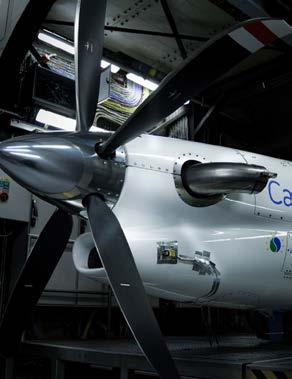
GE's Catalyst engine under testing.
Textron Aviation unveiled the Denali in 2015 with hopes for first flight in 2019. The Denali took its first flight in 2021 with the goal of certification in 2023.
The Catalyst engine will provide better fuel consumption and up to 10% higher cruise power compared to competitors in the same engine class, GE says. It introduces two stages of variable stator vanes and cooled high-pressure turbine blades. It also features components made by using additive manufacturing.
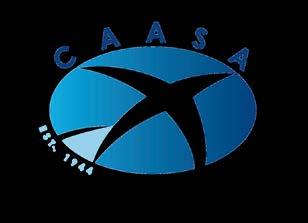








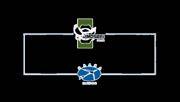


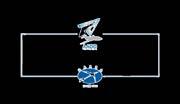




ATTITUDE FOR ALTITUDE GUY LEITCH

SO SAA HAS FINALLY APPOINTED A NEW ‘PERMANENT’ CEO. IN A HUGELY RECIDIVIST STEP, DESPITE THE SAA BOARD’S RECOMMENDATION THAT THEY EMPLOY EITHER A KENYAN OR A WHITE MALE, THE SA GOVERNMENT FORCED THE APPOINTMENT A BLACK SOUTH AFRICAN. THAT’S TRANSFORMATION AT WORK FOR YOU.
THE black South African male, whom the Board did not want, was the incumbent Interim CEO, Prof John Lamola. It must be terrible for him to know that he was third choice, and only got the job because he was – yes – a black South African.
There was much hope that the new SAA V2.0 would be free of government meddling. But now this hope has been crushed by Transport Minister Barbara Creecy and Deputy President Paul Mashatile overriding the Board’s two preferred candidates.
The tragedy is that, despite being crucified for poor psychometric evaluations, Lamola is not a bad candidate. He claims that under his leadership the airline is operating profitability. Further, he has avoided buckling to government pressure and
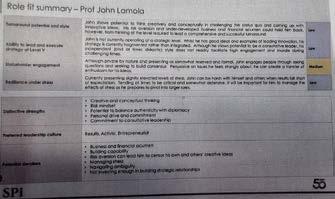
making stupid decisions – like flying to Beijing.
Lamola’s commitment to the job is not questioned, and he has faced some tough times, such as the pilots’ strike in December and a low-key one in March.
Perhaps it’s been a blessing in disguise that the airline has a chronic shortage of capital. This prevented Lamola expanding the airline back to its R6 billion a year pre-Covid loss.
According to News24, leaked
psychometric tests reveal that Lamola ranked low in evaluations for his “sometimes didactic [lecturing] style and underdeveloped business and financial acumen.”
Others claim that his management style was at odds with the SAA Board in that, “Lamola has serious governance issues and is trying to run SAA as if it’s his airline, not confiding in the executive on big decisions and ignoring board oversight.”
The damming competency rating. Image: News24
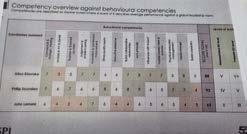
A Lamola fault I can personally report is that he has played the race card with vitriolic abandon when criticised. But I guess that’s what happens when you don’t know whether you got the job because you are good at it – or because you’re a black South African. It’s no wonder that he was not the Board’s preferred candidate.
The Zuma presidency was marked by cronyism and cadre deployment by Zuma and Gupta-favoured cadres sanctioned by the ANC’s deployment committee. In his final report, former Chief Justice Raymond Zondo described the deployment committee as ‘unconstitutional and illegal’. News24's Adriaan Basson writes, “SAA was one of the entities stripped of its status as the pride of South Africa to make way for the Guptas’ friends. Remember how Malusi Gigaba and Dudu Myeni’s interference led to SAA cancelling its Johannesburg-Mumbai route in favour of Jet Airways?
When SAA began the search for a permanent CEO in 2024, it was accepted that, regardless of the government’s transformation agenda, the stakes were so high that the SAA Board would appoint the best candidate for the job, even if he – or she - were not a South African citizen. Six people made the short list, of which Lamola, the Interim CEO since 2022, was one. The three people were Kenya Airways CEO Allan Kilavuka and TUS Airways’ COO, Philip Saunders.
Under Kilavuka’s leadership, Kenya Airways won an Airline of the Year award in 2023 for best-improved profitability. Saunders too has had an exemplary career, having worked for British
Airways, Kuwait Airways and Caribbean Airlines and even been COO and Acting CEO of SAA.
These three CEO candidates had psychometric assessments and Lamola came last on all scores, being described as having “underdeveloped business and financial acumen, and was risk averse”. Stingingly, the report says, “he does not operate at a strategic level.”
I have to admit a quantum of sympathy for Lamola. Minister Creecy said she felt it was “utterly disgraceful” and “disgusting” that News24 had published what she claimed was personal information.
After the interviews and psychometric assessments the SAA board selected Kilavuka. That should have been the final decision – but the government, in its role as sole shareholder, overrode the Board. Basson says, “Creecy and Mashatile went on a frolic of their own and reinterviewed Kilavuka and Lamola. There are absolutely no grounds or motivation for them to have done this.”
Saunders was presumably omitted from these interviews because, as a white male he
was anathema to the airline’s transformation objectives. It raised the spectre of the impossible job Andre de Ruyter had as CEO of Eskom, when he was continuously sabotaged – either for being white, or for just trying to clean up the pandemic culture of malfeasance. And then too, there is the ghost of Coleman Andrews, who was too white and American for SAA.
Basson writes, “Asked why she didn’t go with Kilavuka, Creecy said there would have been issues with obtaining security clearance because
he was a foreigner. That is the lamest excuse I’ve heard for xenophobia in a long time.”
He asks the obvious question - why did we, at vast expense, commission a global headhunting company if we could not appoint a foreigner? “Creecy and Mashatile should be honest
“Lamola does not operate at a strategic level”
about why they appointed a poor-performing executive who doesn’t operate at a strategic level and has underdeveloped financial acumen to run our national carrier,” Basson says.
I can only conclude that if the SAA board had any backbone, it would resign as it did under Russel Loubser in 2010. The problem then was that it left a vacuum – which Zuma filled with his cronies – in particular the terrible Dudu Myeni.
Instead of resigning, the SAA Board kowtowed to the politicians. Yet again there is no sense of responsibility or accountability in sunny South Africa.
And Lamola ? Well I guess he will just keep his head down and hope that this whole embarrassing nightmare will blow over.
A year ago I asked Lamola
if he was applying for the permanent CEO position. He memorably replied, ‘It’s a terrible job,” and said he would be happy to go back to academia – philosophising about religion. Yet he accepted the permanent CEO job – embarrassing selection process be dammed.
This made me think back to a somewhat satirical column I wrote some years ago, inspired by Coleman Andrews and Khaya Ngqula’s truncated terms as CEO of SAA;
“It is natural that as an airline chief you get to travel first class (if necessary just bump a few of the little people who wrangled an upgrade). If it gets a bit dull take the co-pilot’s seat and fly with one of your training captains. And that’s not all the fun you can have - not by a long shot.
will see
wasn’t for discovering The Sex Pistols and Boy George.
But we know that all good things must come to an end and so, if like every SAA CEO over the past 20 years, you get shown the door, you need to make sure your parachute is not just golden - but platinum.
The current benchmark for exit packages is the wholly admirable R232 million garnered by Coleman Andrews 25 years ago.
So Prof Lamola, provided you have invested in a skilled team of expensive remuneration lawyers on the way in, this should be an easily attainable.
Even though SAA V2.0 was not supposed to have government intervention, if you want to be CEO, the trick is to have the government on your side. Then who cares if there
“Political correctness be dammed, cabin attendants are there to provide a certain amount of visual pleasure, so you can personally select the hostess with the mostest.” I hear the Ukrainian babes are especially willing. You can also source endless gifts from duty free, you can send the wife and kids to visit granny or monsterin-law on the other side of the world; the opportunities are endless.
Just think of Richard Branson - he even got knighted - and it
are better candidates than you? The ANC certainly does not want to be shown up by a Kenyan – or God forbid – a white male.
The precedent is now set. We can expect continued political interference in SAA V2.0. Given the ANC’s dependence on Iran for election funding, I reckon we will see SAA flying to Teheran soon.

guy@saflyermag.co.za j





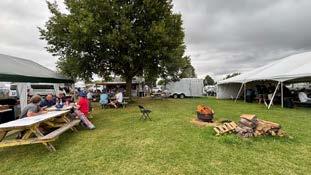
Day and night, the fun doesn’t stop!
Our catered camp site on the airfield means you won’t miss out on any of the activities – the early morning wake up call of P 51’s getting airborne, the evening ultralight parade, the STOL competitions and of course, the incredible night airshows! Plus all the camaraderie and fun only a camping group can offer.
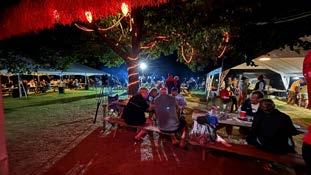

Our campsite offers you a home from home at Oshkosh, tents and bedding, meals and beverages, charging facilities and sheltered seating – no camping gear required, bring only your clothes!
Tours depart Johannesburg, Durban or Cape Town Friday 18th July and return Tuesday 29th July 2024.
Prices from R40 650, Early Bird specials available! Neil +27 84 674 5674
your place HERE
PETER GARRISON

I KNOW! Let’s put the engine inside the turbocharger!
DESPITE the complaints we often hear about the “outdated” technology of opposed piston engines, the industry has found nothing decisively better with which to propel smaller aeroplanes.
at first I took it for a joke
Not for lack of trying: The history of small aircraft engines – in fact, of engines in general – is a freaks’ graveyard. There have been barrel-shaped engines, spherical engines, cubical engines and diskshaped engines, steam engines, perpetual-motion engines, engines with flaps and vanes and sliding and spinning parts in every arrangement that human ingenuity could devise and spatial visualisation conceive.

Invariably, their inventors asserted that they would be superior to existing engines; almost as invariably, they died in infancy.
But hope springs eternal.
I received from a friend a copy of a 1997 patent for a novel type of engine. The inventor of the device was a John Whurr –a name so onomatopoetic as to arouse suspicion that it is itself an invention – and the assignee was the mighty Rolls-Royce corporation.
In cutaway profile, the engine appears to be a medium-bypass turbofan, with the characteristic
large shroud surrounding a fan and, behind it, a schematic turbojet, with a multi-stage axial compressor, a combustor, and an exhaust-driven turbine. On closer inspection, however, the confusing cluster of rectangles where the combustors ought to be turns out to represent a three-rotor Wankel rotary engine.
Paddling our way through the quaint jargon of patent attorneys, we learn that this is a two-shaft engine, with one shaft “drivingly connecting” the turbine and the fan, and the second shaft “drivingly interconnecting
said at least one rotary internal combustion engine and said air compressor.” In other words, the Wankel engine drives the compressor, which supercharges it; the exhaust from the Wankel drives the turbine, which in turn drives the fan, which in turn propels the aeroplane.
This document arrived at the beginning of April, and at first I took it for a joke. How could the Wankel possible have the required mass flow? It’s not for nothing that intermittent combustion engines have small
air intakes and jets have huge ones. For that matter, how could the entire output of the rotary engine be required to compress its own induction air?
But further investigation led to a NASA Technical Memorandum from 1976 comparing just such an engine with a turbofan as potential powerplants for a subsonic transport.
The main parameters of the comparison – which was theoretical; no metal was harmed in its creation – were limited to fuel consumption and engine weight. The idea underlying both this study and the Rolls-Royce patent is that
the intermittent-combustion engine is more efficient than the burner cans of a conventional turbofan, and so the rotary engine would need less fuel to spin the fan and compressor
turbocharged piston engine. The relative sizes of the components are different, and so is the arrangement of what is “drivingly connected” to what; but the building blocks are the same.
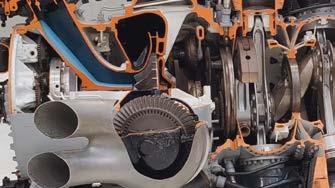
than the turbofan does.
On the other hand, the rotary engine is heavier than a bunch of burner cans, and so the fuel saved on a given trip must make up for the cost of hauling around the extra engine weight.
NASA’s 1976 conclusion – it should be emphasised that turbofans have evolved considerably since then – was that the compound engine’s advantage depended heavily upon limiting the rotary’s cooling losses. In no case was the compound engine less efficient than the turbofan, but only with special insulation and high-temperature materials did the Wankel reduce fuel consumption by as much as eight percent.
Strange as this contraption appears to be, it actually has a lot in common with your ordinary
The power recovery turbine on the R-3350 turbo-compound engine.
A turbocharger consists of a turbine and a compressor on a common shaft; the turbine captures energy from the exhaust stream and uses it to compress the induction air. In this case the engine drives the propeller; in the rotary-turbofan hybrid the turbine drives the propeller (called “fan,” but it’s the same thing: a bunch of spinning wings producing forward lift) while the engine drives the compressor. But it doesn’t really matter what drives what, any more than it matters, when you’re building a house, who hammers, who saws, and who cleans up. A certain amount of work needs to be done, and three workers are there to do it.
In the aftermath of World War II, Curtiss-Wright set out to adapt its R-3350 engine, which
had powered the B-29 bomber, to airline use by reducing its fuel consumption. Rearranging the same three basic components as we have already seen, they placed turbines in the three exhaust collectors and “drivingly connected” these turbines to the crankshaft, which itself drove a mechanical supercharger. The arrangement is called “turbocompound,” and has been used ever since on other engines as well, notably in diesel trucks, although with a turbocharger rather than a mechanical supercharger.
The results of the R-3350 modification are variously reported. Several hundred horsepower were recaptured
the initials PRT, by which Curtiss-Wright meant “power recovery turbine”, as “parts recovery turbine,” because of the number of valve bits that turned up in them. I don’t know
why the PRTs would have affected valve life – maybe back pressure, but I doubt it – but it is easy to see how the PRTs themselves could have been affected by flying chunks of

from the exhaust stream that would otherwise simply have disappeared overboard, and the specific fuel consumption dropped at least to 0.4 pounds per horsepower per hour, or maybe 0.38, depending whom you ask. Anyway, it was a notable improvement, although at some cost in reliability.
Jesting mechanics translated
Early in the 1990s NASA took an interest in rotary engines, and commissioned several studies of a highperformance multi-fuel engine design called SCORE, for “Stratified Charge Omnivorous Rotary Engine.” The target output was in the 350-400 hp range, with a very high critical
altitude. Such an engine would compete with a small turboprop, with much lower acquisition cost and fuel consumption.
The specific fuel consumption of rotaries is unfortunately about 10 percent higher than that of comparable reciprocating engines, and one of the aims of the SCORE project was to see if it could be brought down to a diesel-like .34 pounds per horsepower-hour on Jet-A.
John Deere, which then held the US rights to the Wankel engine, did a theoretical study to find the optimum combination of elements for a hypothetical twin-engine aeroplane operating above FL300. Turbocompounding, with the power recovery turbine placed upstream of the turbocharger, was found to be essential, contributing from 40 to as much as 80 additional horsepower for the same fuel flow.
A year later, John Deere washed its hands of the rotary business.
Well, that’s how it goes with engines. An idea may have great appeal to mechanical engineers, but it must enthral the corporation’s MBAs if it is to survive in the thin air of the top floor. As the poet Thomas Gray said:
Full many a flower is born to blush unseen, And waste its sweetness on the desert air.
j
We asked our helicopter supremo Jannie Matthysen for this thoughts on the proposed Robinson R88 helicopter.
Paraphrasing Jannie, he said,
“Robinson have created a Swiss Army knife - which pilots have not asked for. Perhaps users prefer specialist helicopters?”
by Peter Garrison




JIM DAVIS

What’s the big deal about a steep turn?
Hell it’s only 15° more than an ordinary 30° banked turn – and 15° is nothing – right?
NOW I’m not good at sums so it took me a while to understand that it depends where you put that 15° of bank. If you start from straight and level it’s hardly noticeable.
Now imagine a pansy, 30° banked turn – the one you do every day. So if you increase that bank by a woosie 15° it can’t make much difference – or can it?
That would take you to a standard 45° steep turn. Later, we will see what yet another 15° of bank does when you take it up to 60°.
But, what’s the point of a steep turn? Well, it has three important functions, plus one optional one. You would use a steep turn if you:
• Suddenly find yourself on a collision course with another aircraft, or a bird, or a radio mast.
• Get into trouble in a valley.
• Want a brilliant coordination exercise. To find out how a pilot handles his aircraft simply ask him to do a steep turn to the left and then go straight over to do one to the right, without stopping in the middle. If you can do this a few times – going from side to side while keeping the ball near the middle and keeping the nose where it should be to hold altitude – then you can fly. It is not an easy exercise.
• You suddenly get it into your head that pylon racing is a good idea.
Now, before we get technical, I must tell you that I found out about steep turns the hard way. I did them at low level without any dual - and very nearly saw my tail-light.
You know those flickering black and white movies where everyone walked fast? Well that’s when I was building hours for my PPL. Whichever instructor happened to be around would ask what I did on my last flight, then usually tell me to go and do more of the same.
This meant you dragged a little yellow Cub out of the hangar, preflit it, found a prop-swinger and you were on your way to beat up boats on Bronkhorstspruit Dam, or entertain yourself with whatever cowboying took your fancy.
On the occasion of my self-taught steep turns I took myself to Garsfontein, which is about three nm east of Waterkloof. It’s all built up now, but at the time I was growing chickens there, and couldn’t even see my neighbour’s farmhouse.
Anyhow I headed there so that my young wife and baby son could admire me.

Vertical lift to balance weight
See how you need to increase lift exponentially as you increase bank. At 30°of bank you need only 15% more lift. But if you double the bank to 60°, you need 100% more lift! And if you add just another 15°, to give 75°of bank, you need an unbleievable 386% of your original lift. We don’t have a big enough page to show it. Besides which that is exactly the right amount to break the aircraft - it is certified to 3.8G and 75°of bank will give you 3.86. Food for thought!
Our house was on a hillside, so to get low enough to impress my devotees, my turn had to be partly climbing and partly descending. Now, anyone who has flown a 65 HP Cub on the Reef will suck in their breath and confirm this was not a good plan.
No one had explained that turns cause more drag and a loss of airspeed. Or that the stall speed
increases in a turn. So the aeroplane kept going all sloppy as I circled the house. Every now and then my left turn would sort of wobble into a bit of a right turn. Eventually I had had enough of this obviously defective aircraft, I took it back to the club and asked them to take it to Placo to get it repaired before it hurt someone.
I had no idea that the aeroplane was stalling
and trying to spin. Had it been anything other than a Cub my promising career would have been hacked off at the roots.
So let me tell you why that little bit of extra bank makes so much difference.
The diagram shows how increasing bank by even a small amount calls for a huge increase in the lift required. Going from a 30° to a 45° turn almost triples the amount of extra lift you need. Two more 15° instalments will, respectively, take you to 100% more lift required and then blow your socks off with 300%, in a 4G manoeuvre. Look at the Lift required v. angle of bank graph.
So you’ve got the picture - a little increase in bank calls for a lot of pulling. And with that comes lots of drag, so you need a whole lot more power to stay in the sky.
While this has its disadvantages, I must tell you how instructors use this as a tool for knocking some of the bull out of gung-ho students, in the early stages. Instructor manuals tell you to give overconfident pupes a difficult task, and then criticise them when they don’t get it right. Sound cruel? Maybe it is, and maybe it saves their miserable lives. There is nothing an instructor
hates more than a cocky pupe. Ask them to do a medium turn. Quite often they steepen it on their own - just to show you how good they are. But if they don’t, then you simply mutter something like, “That’s a bit pansy, isn’t it?” They only need to steepen the turn very slightly before they start losing it. This is your chance to complain about increasing airspeed and loss of height. Pupe climbs back into box - mission accomplished.
To understand why going from 30° to 45° is such a big deal, we have to do a couple of sums. Now I am not good at sums, so I try to make things simple.
Have another look at the first diagram. If the wings are level your lift needs to exactly balance the weight. If your aeroplane weighs 1,000 kgs, then it needs exactly 1,000 kgs of lift to keep it flying level.
If you bank the aircraft, then its lift banks with it, and there’s not enough vertical lift to balance the weight. That extra lift comes from easing back on the stick and increasing the angle of attack. But this causes two problems.
• If you get more lift (by any means) it costs you in drag. So the aircraft slows down,
• If you ease back on the stick, you increase your angle of attack, and that brings you closer to the
stall.
So in any turn, the airspeed decreases and stall speed increases.
To get a sense of how
much stall speed increases with bank have a look at that diagram again and imagine what happens when we do a 90° bank.
Note how the G loading appears to be out of synch with the percentage increase in lift requirement. For instance 2G corresponds to only 100% lift increase. The reason for this apparent error is that in straight and level ight we start with the G meter reading 1G. So a 100% increase is equal to 2G, and so on throught the range.
Also note that most light aircraft are built to withstand 3.8G. This means that if you attempt a 75° banked turn you are operating outside the design limits and can overstress, or break the aircraft in ight.
Angle of bank
Correct - no vertical lift at all - it is all horizontal, this means that the aircraft will fall at the same speed as the battery for a diesel truck. So it’s impossible to maintain altitude in a 90° banked turn unless you have an aerobatic aeroplane with a fantastic power to weight ratio and a fuselage that generates lift on its side. Vertical lift is then supplied partly from the fuselage, and partly from the
the normal stall speed. So the square root of 2 is 1.4 and we multiply that by a normal stall speed of say 50 kts, and that gives our new stall speed of 71 kts.
I told you it was easy. Okay, relax, we have finished with the sums. So let me tell you another seriously scary story about steep turns just to remind you why all this is so important for passing exams – and staying alive.
down-thrust from the propeller, or jet engine.
So I was saying that the need for extra lift goes from zero, with no bank, to infinity at 90° of bank. You can see this on the Lift Required v. Angle of Bank graph.
Okay, I have put off the dreaded formulae long enoughactually they are very easy.
The first one tells you how to find your G loading in a turn. It’s simply 1/ Cos of bank angle. So if you are banked at 60° you look up the cosine of 60, which is 0.5. And 1 divided by ½ = 2.
Now, to find your new stall speed, you take the square root of 2 and multiply that by
A million years ago I was a hangar-rat at Placo. My boss, Zingi Harrison, said, ‘Davis, get in the back of that aeroplanewe need some weight, and you can’t stuff that up.’
I was thrilled. Jack Jay, our new wonder-boy from England, was putting the finishing touches to his conversion to a brown 235 Apache.
Major Bomb-doors Pidsley was the instructor, Zingi and someone else sat in the middle row and I was in the single seat in the boot and had to scramble in through the hatch. No matter, I was excited to be in any aeroplane. The mission was to
If your wings level, apless stall speed is 60 kts. Here’s what it will be at various bank angles:
30° Stall at 64 kts 45° Stall at 71kts 60° Stall at 85 kts 75° Stall at 118 kts
Stall at 144 kts
To calculate stall speed: Use 1/Cos θ (bank angle).This gives you load factor. Find the square root of the load factor and multiply it by thenormal stall speed.
For example, if your normal stall is 50kts. Find your stall speed in a 60° banked turn.
Cos 60 = 0.5 1/0.5 = 2 √2 = 1.4 1.4 x 50 kts = 70 kts.
do three full-load landings.
The first two were great, the trouble started on the third downwind when Bomb-doors decided to simulate an engine failure on the left engine. Yes, the one with the hydraulics to pump out the gear and flaps. All went well while Bomb-doors and Jack busied themselves with the donkey’s-dong emergency pump the get the gear out and half flaps set.
The trouble is that they were so busy with their heads in the cockpit that they allowed the downwind leg to converge towards the field. Twin pilots are now starting to break out a sweat and squirm in their seats – they can see where this is going. We had almost no base leg and Jack did a classic trick – he overshat the centerline, forcing us to do a hammerhead. This became an ever steepening turn into the dead engine.
Although I didn’t know it, we were in an extremely precarious position. We could do the steep turn and risk spinning in. Heavy twins, turning into the dead engine, with everything hanging out, and the airspeed bleeding off, are prone to inverting themselves. Our only other option was to level the wings and go-around.
But up-country heavy twins, with the gear and flaps deployed, don’t like to go around on one engine. Even if Jack and the major pumped like hell and managed to get the
gear and flaps up before we hit the ground there was still little chance of climbing away unless they managed to start the dead engine while struggling with the hydraulics – but there just wasn’t time for that.
We continued with the turn. The aircraft shuddered on the edge of a stall.
By looking between all the intervening shoulders I could just see the ASI with something like 85 mph showing, so I knew we couldn’t be stalling. I thought the shudder must be something to do with the feathered prop.
Later I asked Zingi about it. He said we were on the verge of stalling and spinning in. I asked how that could happen at 85 mph when the aircraft normally stalled at 65 mph. He just said, “Bugger off Davis and do some reading.”
get back on finals properly. We would have landed half way down the field or on the grass –but so what? Definitely the right thing to do in a C310, a Baron or a Twin Comanche.
Which brings me pretty much to the crux of the matter. If you are in danger of stalling in a steep turn, or by pulling too hard to get out of a dive, all you have to do is unload the wing by relaxing the back pressure on the stick. Of course this will mean a loss of height - but that should be taken care of by reducing the bank, or levelling the wings.
Okay, we have looked at the technical side of steep turns, but I haven’t told you how to do them. First let’s look at the classic one in your flight test.
You start with doing the HASELL checks – particularly
So that was the second time the gentle Clark-Y wing saved my life.
As a third option Jack could have relaxed the back pressure and unloaded the wing. This would have meant we wouldn’t
lookout, behind in the direction of the turn.
Enter as normal, with balanced aileron and rudder. As you go through 30°, smoothly increase power to help maintain airspeed. Many light aircraft
need full power.
Allow the bank to increase to 45° (on the AH), and keep it there. You need to ease back to keep the nose up and supply the extra lift. You will have to use a lot more back pressure as the bank gets steeper.
Once you are settled in the turn, you have to divide your attention between the horizon, the A/H, the ball, and lookout for other traffic. Actually, with a steady angle of bank you can take your feet off the rudders and the ball will stay pretty much centred. The story about using top rudder to keep the nose up is rubbish. Don’t even think of it.
If the bank gets too steep, you will not be able to keep the nose up and the airspeed will start running away. If this happens, reduce the bank and ease the nose up. These corrections must be positive and immediate. If your inputs are too late or too gentle the airspeed increases very quickly.
If you can’t get the nose up, then throttle back and level the wings before the airspeed or revs become excessive.
If you get the nose too high and the airspeed decreases, possibly to the extent that you get a stall warning, reduce back pressure and level the wings. Steep turns to the left don’t
need as much rudder as righthand ones. This is because the extra power of the slipstream tends to turn the aircraft left.
Also, in side-by-side aircraft the nose position will appear different depending on which way you turn.
To recover, smoothly reduce to cruise power as the bank goes through 30°. As you roll
stick and rudder pilot.
Postscript
On a SAAF instructors’ course at Potch we had to do 75° gliding turns in those magnificent C185s. These required a hell of a lot of pulling, and serious G to the extent that they eventually stopped us having fun because the
out, use enough rudder to counteract aileron drag and the power reduction.
In a real traffic avoidance situation, you obviously skip the lookout and throw the aircraft into probably a right hand turn. And in a valley, the slower you are the less space you need, so use landing flap and reduced airspeed.
Don’t forget to practice the left-to-right exercise I described. Get it right and soon word will get around that you are a great
Cessnas were popping rivets in the top of the wings.
So, using our neat little formula that says G loading = 1 divided by the cosine of 75° we find that we were pulling 3.86 G. If we did it smoothly and got it exactly right – which we mostly didn’t. It’s an extremely tough exercise.
Most light aircraft are certified for a positive G loading of 3.8Gs in ‘normal category’ ops. However, in ‘utility category this increased to 4.4Gs.
j
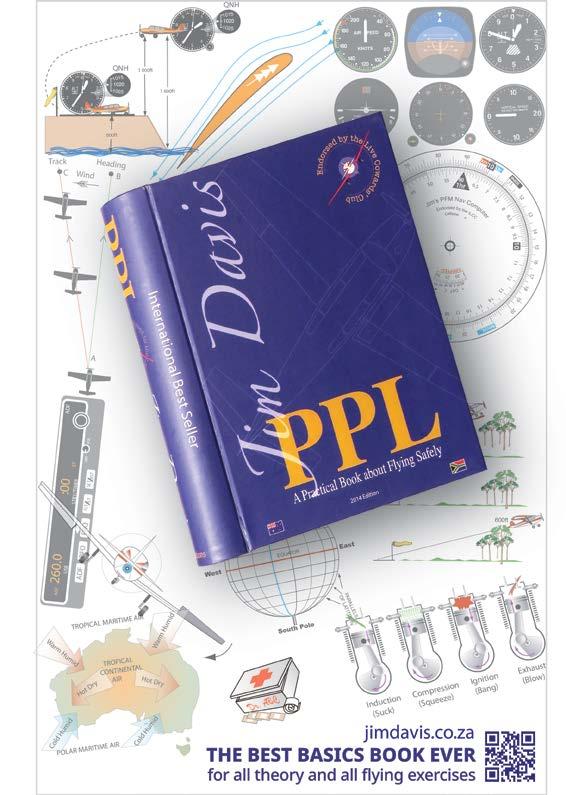
This discussion contains extracts from a report by the Air Transport Safety Board of Canada. It’s to promote safety and not to establish liability.
At 0702 Eastern Time on 1 August 2023 the aircraft departed Runway 29 with a student pilot and his instructor on board, in preparation for the student’s first solo.
• The student pilot carried out 8 touch-andgos. The flight ended at 0853.
• The instructor deemed the student pilot ready for his first solo.
• The student was to takeoff from Runway 29 and enter the circuit to land on Runway 24.
• Ten minutes later, once the solo flight had been authorised by a check instructor, the student taxied to Runway 29.
• He took off at approximately 0906 and made a climbing right turn to join the circuit for Runway 24.
• On the downwind leg, the tower instructed the student to extend the downwind.
• Fifty-four seconds later, the tower authorized him to turn to the base leg.
• At 0920 the aircraft crossed the threshold of 24 at about 60 feet and landed approximately 550 feet beyond the threshold.
• The aircraft’s nose wheel hit the ground first, causing the aircraft to bounce before touching down again approximately 350 feet further.
• The aircraft veered to the left and he initiated a go-around. After takeoff the student tried to regain altitude over the grass area between the runway and Taxiway D. He gradually turned toward the terminal building.
• The aircraft was in slow flight and near the ground.
• The pilot tried to regain altitude and turned to the right, back toward Runway 24.
• When the aircraft reached Runway 24, it was able to climb to approximately 45 feet AGL. It then turned left. The left wing stalled, and the aircraft rolled to the left and entered a spin before crashing on the edge of the runway in an almost-vertical, nose-down attitude, and then rolled onto its back.
• There was no fire.
• The student pilot was wearing his safety belt, consisting of a lap strap and shoulder harness, but was nevertheless seriously injured.

The propeller damage was consistent with an engine that was producing power, but the amount of power could not be determined.
Control cable continuity was confirmed. The flap actuator indicated that the flaps were at approximately 13°.
The aircraft systems were examined and no signs of failure were observed.
Video footage showed that the left rudder pedal was applied when the aircraft entered an incipient spin.
CYQB has two 150-foot-wide paved runways, 11/29 and 06/24, which are 5700 and 9000 feet long, respectively.
The weather was suitable for VFR and was not a factor in the accident.
The student pilot held a Category 1 medical certificate and a student pilot permit.
He had 23.7 hours of dual flight time. He had been supervised by three different instructors.
After completing two progress monitoring flights, on 25 May and 05 July 2023, he completed several flights with a third instructor, who recommended him for a pre-solo evaluation flight. During the evaluation flight, on 26 July, the check instructor noted certain deficiencies, particularly with respect to the approach, maintaining airspeed and attitude.
Three correction flights were
required, the last was on the day of the accident.
The aircraft had 15,527 hours. Its weight and balance were within limits. There was no indication of a component or system malfunction.
The go-around technique described in the Flight Training Manual assumes that the aircraft has sufficient speed to resume flight.
The manual does not describe the actions to be taken in the event of a runway excursion.
I was going to say what the hell were these instructors thinking? But they weren’t. Your first solo should be one of the safest flights of your life because a good instructor will have done a whole lot of safety stuff in the background that you probably don’t notice.
Later you will have to take responsibility for all of this – and you may not always get it right.
I did say a ‘good’ instructor will do all the safety stuff.
Unfortunately the Gleitch has again given me limited space so we will have to do it in point form.
The pupil should be able to confidently manoeuvre the aeroplane through all the basics –takeoff, climb, level flight, descent,
The flight path of the Cessna.
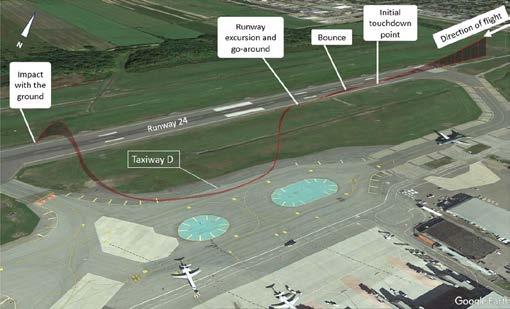
slow flight, stalls, the approach and landing.
She must also be able to confidently and positively transition between these exercises. Such as transitioning from an approach to a climb. And even from a botched landing to a climb. In other words, do a go-around.
She must also be able to recognise when a go-around from an approach or botched landing is appropriate. A good instructor will give her immediate and generous praise for doing this – particularly on her own initiative.
The regs also call for her to be able to make a ‘reasonable attempt’ at a forced landing and an EFATO.
The regs also call for her to know how to handle an engine fire on the ground and in flight.
I like her to do at least one circuit and landing without any instruments visible. I use a jacket or towel to cover the entire instrument panel. This is a huge confidence builder
I also like her to recover immediately and positively from my deliberately bad approach that may be too high, or too low, or to one side of the centreline, or too fast or too slow. This assures me that she is confidently in charge of the aircraft.
BACKGROUND STUFF:
• The weather must be good.
• The wind should be calm or down the runway.
• There must be plenty of fuel on board.
• There must be plenty of daylight left.
• The pupil must be relaxed.
• The circuit must be standard.
• ATC must not introduce any surprises.
• Radio comms must be clear.
• The instructor must demonstrate absolute confidence in her ability.
• There is only a small time-window when she is ready for solo. If you go past that, her performance will deteoriate.
THAT MUST HAPPEN ON THE DAY:
• She must be well rested and relaxed
• She must be confident in your judgement.
• Tell her, “I can’t make it so I have asked Captain Tailpipe to fly with you.” Do NOT say, “I’m too inexperienced to send you solo.”
• Ideally, she should not expect to fly solo until the last possible moment on the day.
• Tell her to expect a shorter takeoff and steeper climb.
• She must know exactly what you expect of her.
• She must only do ONE circuit and landing (barring a go-around).
• If she meets these conditions, and can do two or three safe landings and one self-initiated go-around, she is ready for solo. (Don’t expect all good landings – just safe ones)
• She must not be stressed or tired.
• She must not have her routine changed.
• She must not be under pressure to solo within a specific time frame.
• The instructor must never do ‘abbreviated’ or ‘quick’ circuits in order fit more into a cession. It sets a terrible example and it doesn’t allow her time to plan her next approach an landing.
• The instructor should not give her new information after telling her she is about to fly solo – she is not listening.
• Don’t let her fly solo again on the next couple of flights. Performance normally decreases sharply immediately after the first solo. Over-confidence?
• An afternoon flight is a bad idea because of turbulence, traffic, weather, daylight and doziness after lunch on a warm day.
• The student lost directional control on the ground.
• The student lost directional control in the air. (A common fault due to poor training.)
• The student failed to take full power on the go-around. (Another common fault due to poor training.)
• A runway excursion is seldom improved with power. I suspect there was no training on the subject.
• The student was mentally exhausted after being in a busy circuit for almost two hours.
• The student was told to make a non-standard circuit.
• ATC altered the student’s planned circuit.
• The aircraft was hot and high and the student didn’t go-around.
• Due to being hot and high, the student pushed the aircraft down on the nosewheel
• The student needed more training on the use of right rudder with power –particularly at low airspeed.
• The flaps should not have been retracted until the aircraft was gaining airspeed in level flight.
A confident and positive go-around is the most important exercise in the book – at any stage of your flying career.
j
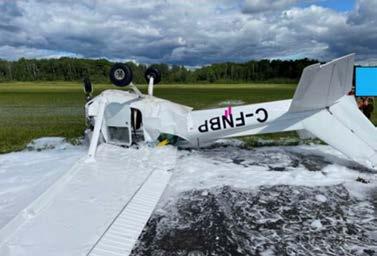
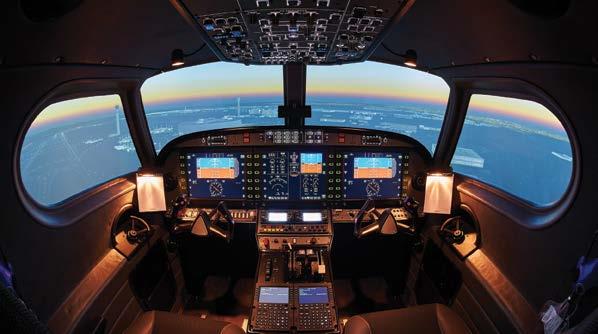

Tel: 011 701 3862
E-mail: info@aeronav.co.za
Website: www.aeronav.co.za










Parys - FAPY R27.99 R20.75
Pietermaritzburg - FAPM R30.10 R22.10

Pietersburg Civil - FAPI R29.25 R21.55




Plettenberg Bay - FAPG NO FUEL NO FUEL
Port Alfred - FAPA R33.50
Port Elizabeth - FAPE R32.15 R23.19
Potchefstroom - FAPS R27.41 R20.17
Rand - FAGM R34.36 R21.77
Robertson - FARS R31.15
Rustenburg - FARG R29.50 R21.95
Secunda - FASC R31.05 R21.28
Skeerpoort *Customer to collect R25.17 R17.93
Springbok - FASB R33.93 R27.03
Springs - FASI R36.25
Stellenbosch - FASH R33.00
Swellendam - FASX R29.70 R20.30
Tempe - FATP R26.86 R18.71
Thabazimbi - FATI R27.91 R20.67
Upington - FAUP R34.50



MORNÉ BOOIJ-LIEWES

The year is flying by and by the time this column is published, a quarter of the year will already have passed.
FEBRUARY’S register updates is a mixed bag but also includes some ‘house-keeping’ in the deletions.
This month’s added type-certified registrations are once again two airliners – an Airbus A320 and a Boeing 737-400 freighter.
The A320 ZS-SZN (4496) joins SAA’s growing fleet and will soon enter service with the carrier. The plane had been delivered new to Qatar Airways in November 2010 and was delivered to OR Tambo International Airport on 23 January with a Guernsey ferry registration 2-SMBC, having ferried from Doha via Nairobi.
Boeing 737-476(SF) ZS-TLY is another of the former ASL Airlines Boeing 737 freighters acquired by Africa Charter Airline, being delivered to OR Tambo on 11 January.
Five helicopters are added this month. Two more of the ever-popular Robinson R44s are registered locally along with another of the sleek Airbus Helicopters H130s. The last two are more unusual types: a McDonnel Douglas MD530E and a BK-117. Again the operators are not know as the SACAA does not share this information with us, but perhaps our readers can update us?
The NTCA category shows another strong growth month with a mixed bag of six new additions for February. Two Sling Aircraft models, a Sling TSi and a home-built Sling 2 are registered. A Scalewings SW51 Mustang ZU-MPM is registered and some research shows this is a 70% scale replica of the venerable WWII P-51D Mustang.
A new Air Creation XP Buggy weight-shift trike microlite closes the fixed-wing NTCA register additions.
Yet another Aerospatiale SA315B Llama helicopter is registered, this time ZU-RJC.
Next we turn to the registration cancellations
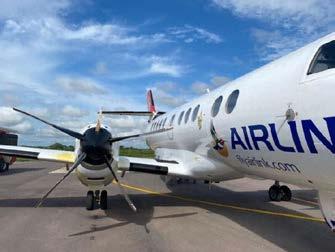
OPPOSITE: ZS-TMB is an Embraer 120 Brazilia - now exported.
Image: Jelani
LEFT: ZS-NRJ after a birstrikewhich wrote the aircraft off. Image: Unknown
BELOW: ZS-ULT a LearJet 45 has been exported.
Image: Vitor Emanuel

South African Airways A320-200 A7-AHF was registered ZS-SZN. Image: Star Alliance Virtual - H.Gousse.

for February. First up is a Learjet 45, ZS-ULT that has taken up registry in the Isle of Man as M-SULT so they just had to replace the Z with an M and move the dash, which makes me think that the ownership remains unchanged but it’s just moved to a perhaps less hassle offshore registry as we have seen with a few other local corporate jets.
This Learjet was (is still?) based in the Western Cape but has been a long-time resident in South Africa, having originally been bought by Universal Leaf Tobacco, hence the registration, but subsequently sold on again to a new owner that retained the registration.
Another noted departure is a Baron 58 VHBVS (TH-1250) that departed Wonderboom Airport on 8 March. This is the former ZS-BEF, a 1981 model Baron that was retrofitted with distinctive winglets. It now moves to Australia having routed from Lanseria onwards to Dar es Salaam, Victoria, Colombo, Jakarta, Port Hedland and arriving in Ceduna on 13 March.
Other deletions include an Embraer 120 Brasilia, ZS-TMB, that is cancelled to Antigua and Barbuda in the Caribbean. I suspect this plane is on lease to a carrier based there and will soon return to local registry in South Africa. The plane is operated by Sunrise Airways and departed Kruger Mpumalanga International Airport on 1
October heading to the Caribbean.
Two single engine, high wing Cessnas were deleted in February: A Cessna 210M ZS-MTA that has moved to Malawi and a Cessna U206G ZSOBE that is exported to Madagascar.
A single Airbus Helicopters 125, ZT-HTA has

ABOVE: ZS-OKM was destroyed by an acid spill. Image: Gerrit Griem
BELOW: ZS-BEF is a winglet equipped Baron 58 - now exported. Image: Sebastian Sarwa.

been cancelled to Iran. I have to wonder if this is just to side-step sanctions or if it is in Iran on a contract serviced by a South African company? A flight by this helicopter was picked up on flight tracking app on 23 January near Antalya in Turkey probably before being ferried to Iran.
Finally, two aircraft have been deleted after sustaining damage in respectively incidents. On 1 November 2023, a Beechcraft 1900D, ZS-OKN (UE-23) sustained severe
corrosion damage to the floorboard, floor rails, wing spar and underbelly of the plane after corrosive chemicals being transported leaked from a damaged container. The aircraft was subsequently declared as unsafe and therefore written off.
The second such deletion is of an Airlink Jetstream 41, ZS- NRJ (41062) that sustained severe damage due to a bird strike while landing at Venetia Mine on 3 January 2022. A Kori Bustard (the largest flying bird native to
Africa) impacted the starboard engine which was in reverse thrust configuration at the time. This resulted in one of the propeller blades being severed and fragments from another puncturing the aircraft’s fuselage. The plane was damaged beyond economical
that has relocated to Namibia while a Vans RV-10, ZU-WIZ is cancelled to Zimbabwe. A Jabiru J170 ZU-FZT is cancelled to Paraguay, a country that is not frequently mentioned in this column.
repair and deemed a write-off, but it was only officially removed from the SA Civil Aviation register on 17 January this year. Four NTC types are deleted from the register this month with some interesting end destinations. First off is a Cavalon Autogyro ZU-RML
Finally, another Gazelle helicopter, ZU-RZR leaves our shores. This time it’s to Jordan, but interestingly, this is one of the four helicopters spotted flying in Libya recently. Last month’s column noted three of these Gazelles were cancelled to Israel while the fourth is now, intriguingly, cancelled to Jordan! Clearly someone wants to (unsuccessfully) hide their end destination/operator.
As is the norm, I close this
month’s column with news of South African registered aircraft that are not yet covered in the SACAA’s monthly updates. A Cirrus SR22 ZS-KEV was noted passing through Luxembourg on 3 March heading to Wick in Scotland. The aircraft has been sold in the USA and was on a ferry flight by Alpha2Bravo and piloted by Jon Sargood according to the company’s website. The flight time was 70 hours to cover a distance of 10,700 nm arriving in Ulvade on 9 March, having made 14 stops on the way.
Another arrival was a CRJ900 N591CR (15091) that landed at OR Tambo in the evening of 9 March. It is very likely an additional jet for Cemair’s fleet but I am sure this will be confirmed soon once the jet features in a future issue of SA Flyer. j

ZS-KEV, a Cirrus SR22 has been sold and ferried back to the USA. Image: AviaStar Photography.




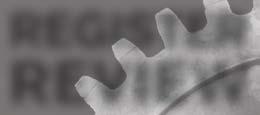



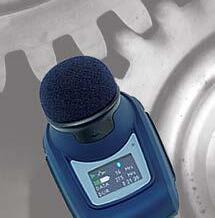




















BUSH PILOT HUGH PRYOR
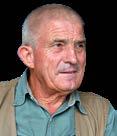
In Part 1 Hugh described how in 1986, he was pleasurably employed in Colonel Gaddafi’s Libya. But then he found himself trapped in the country by an American bombing raid. The possibly of jail loomed large.
MY brain began to shrivel around the edges at the thought of ten years, or perhaps the rest of my life, whichever was shorter, in the hands of a lustfully vengeful Libyan penal system.
A kind of hibernation began to numb my senses against the unspeakable potential of the next days. I felt rather drained and yawned a lot. I had heard that multiple yawns were a symptom of fear, but I was also at the far end of a massively extended tour of duty, with no prospect of relief, so I had some additional justification for the yawning.
True to his word, Eddie came down from Zurich the next day. He was the first evidence I had had for four months that the
outside world still existed. So my greetings, when I met him at the airport, were rather more effusive than he was probably used to from his normally fractious minions.
Suddenly the possibility of not spending the next ten years in a Libyan jail appeared almost feasible. I was not going to start counting my chickens though. Disappointment was a prospect which did not bear thinking about.
“First thing we’ve got to do tomorrow morning,” said Eddie, when we finally reached the Schlumberger office, “Is to get your passport back, and the visa extended.”
What do you think the chances are, Eddie?”
“I know the guys down at Immigration. They’re not a
bad bunch really. The only problem is that the last time I went begging in that office, the Americans had not just tried to blow up Gaddafi.”
Eddie shrugged his large shoulders. “We’ll just have to be nice and see if they will help us out…or you, anyway!”
And they did! My passport had been stuck under the leg of the Visa Section Chief’s desk, to stop it wobbling on the uneven floor. I still have the old passport and it bears the scars to this day. The Chief was mildly apologetic when I found it and I think this is what saved the day.
“Mr Pryor. I am going to extend your business visa until midnight tonight. If you are still in this country one minute after that, I will not have any alternative but to hand you over
to the Peoples’ Committee. I think you have been informed of the consequences if this should happen.”
He handed me my passport. I looked at my watch. The time was 13:00 hours. Swissair was scheduled to takeoff at 13:25 for Zurich. Tripoli Airport is 25 kilometres from the city centre. I was going to miss my flight. My rendezvous with the Libyan Penal System appeared to be booked for one minute after midnight tonight.
I grasped the Chief’s hand in a hurried gesture of gratitude and Eddie and I stormed out of the office in search of a taxi.
Against all the laws of ‘Pryor’s Luck’, one came around the corner and dropped his fare right at the visa section office door. Eddie and I leaped aboard.
“Schlumberger Office.
Haraka! Haraka!” Eddie shouted, as I shut the door. The driver must have picked up the sense of extreme urgency and, without a word, he swerved out and we were at the doors of the Schlumberger
office almost before I had time to wonder if I really needed to pick up my kit. It wasn’t until we had stowed everything in the taxi and charged onto the
six-lane highway that leads to the airport, that I realised how hopeless my case was. We had fifteen minutes to cover twenty-five kilometres, get through Check-in, Customs and Immigration; and I was British and about half the American bombers that had just tried to kill Gaddafi, came from bases in England…No Way! I began to pray.
“Please let Swissair be delayed! PLEASE!” …and they were! They took off just as we arrived at the Airport. My heart seemed to sink into the bubbling bile which threatened to burn out the back of my throat, when I saw that shining MD-82 proudly thrust its smart Swissair colour
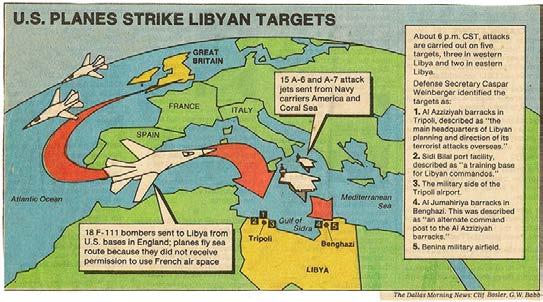
scheme up above the airport terminal buildings.
“Come on, Hugh, let’s go and see the Swissair Station Manager,” Eddie shouted as he grabbed my bag. “I know the guy. He owes me. I brought him some special medicine for his herpes!”
I threw much too much money at our stunned taxi driver and followed Eddie into the terminal. He knew his way around and headed straight for the second level balcony. The Swissair office was the fourth one along, just beyond Lufthansa. Eddie knocked and entered. There was a rather studious, curly-haired Swiss-looking young man sitting behind the desk. He had sores around his mouth. This must be the Station Manager.
“Good afternoon, Heine,” said Eddie, kindly using English for my benefit. “We have a problem.” He then explained briefly my predicament. “Any chance of getting your flight back?...no, I thought not.”
“There’s a Lufthansa flight leaving at 23:50 tonight for Frankfurt.” said Heine, “but I know he’s full, because he turned away six of mine.” Heine shrugged his shoulders hopelessly. “I suppose we should try him anyway, otherwise….?”
The dungeons yawned.
As it happened, the Lufthansa guy probably saved my sanity, if not my life.
“Do you have your Flying Licence with you, Mr. Pryor?” he asked, after some thought.
“Indeed I do.” I replied, handing him my licence. “Might that help?”
“Airline Transport Pilot’s Licence…Hmm” The
grey eyes looked into mine. “Yes, I think it might.”
A broad grin spread across the serious features. “I can offer you the jump seat. As long as Captain Bielefeld agrees, of course.”
I suddenly forgave the Germans for killing my father and three of my uncles. That was not the Germans, anyway, was it? No, it was the Nazis. These Germans were going to save me from a fate which might, quite genuinely, be worse than death.
I was so horrified by the possibility of missing my last chance that I decided to stay at the airport until liberation, in the shape of a Lufthansa Boeing 727 flown by Capt. Bielefeld, appeared, even if it meant an eight hour wait. I had a good book to read, although I would have to be a little discreet, as it was all about some ghastly German, sorry, Nazi atrocity during the Second World War.
I bade farewell, with enormous gratitude, to Eddie and he left, to sort out his trip down to 103-Alpha.
The exit formalities from Tripoli glided past, as though my previous illegal weeks, not to say months, had simply not existed. It was almost surreal. The customs officer looked at me down a large bulbous arrogant nose. Lines of annoyance furrowed his brow, as if dealing with me was something that left a bad taste in his mouth and possibly an unpleasant smell under his nose.
“You British?” Here we go, I thought.
“Yes.” Let’s keep things short.
“You go holiday?”
“Yes I do.” What’s this guy aiming at?
“Four weeks?”
“I am hoping for five.” I allowed a small smile to tweak at the corners of my mouth.
“You come back?”
“Oh yes! I hope so!”
The Customs officer grabbed my hand and shook it vigorously “Very Good!” he almost shouted, “You come back! You Very Welcome!” He smacked a couple of ‘Xs’ on my bags in white
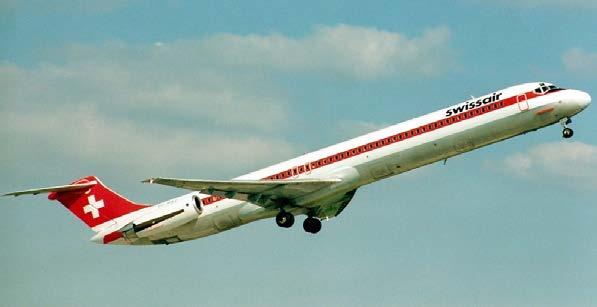
A SwissAir MD-82 - that left Hugh facing 10 years, jail in Libya.
chalk and ushered me through like a VIP.
Capt. Bielefeld was charming, tallish, fair-haired mid-forties. He seemed to know about my problem and went to great lengths to ensure my comfort. I was fed and watered continuously on the flight deck all the way to Frankfurt. They even topped up the water with a modest quantity of Scottish enlightenment, for my added gratification.
Don’t get me wrong. Ralph’s brew was outstanding, for someone stuck out in the middle of the desert. But I have to admit to a leaning in the direction of the Scottish cure-all, which probably comes from my genes and long years of training and indoctrination.
It was fascinating for someone who had covered these particular airways, on his own, at less than one quarter of the speed, in a single-engined
tail-dragger, to observe the consummate skill with which these professionals handled the job. Familiar reporting points, which I had hunted for, seemingly for hours, flashed past in an inkling.
Threatening Alpine ramparts
which had blocked my path, slipped by, beneath us, like boulders on the seabed. The intimidating complications of trying to land at Frankfurt Airport, without incurring a full Public Enquiry, seemed to have evaporated in the face of this crew’s crushing professionalism. Capt Bielefeld kindly pointed out to me the twinkling lights of conflicting traffic. “There’s Alitalia, over there. He’ll be making one more hold before they release him. He’s number four behind us. We’re just turning onto a wide left base now. You can see the airport over there. Do you see it?”
“Yes I’ve got the runway.” I said, captivated. Suddenly I understood precisely where we
HUGH PRYOR
were in the scheme of things. Frankfurt Airport became a friendly, welcoming haven rather than an impenetrable maze.
“The C5-A is on short finals now, with those very bright strobes. You got him?”
“Oh yes. There he is!”
“And we’re going to follow that SAS MD-82 in our eleven o’clock. He’s number two. You see him?”
“Fascinating.” Soon we were pinned so tightly onto the glide slope that the C5-A was actually hidden behind the diminutive MD-82. Little eddies of dissipating wake turbulence nudged us, as if to remind us how over-worked this bit of air was. I almost expected a sweet whiff of kerosene from the preceding Pratts to infiltrate our concentrated little office, through the overhead punkah louvres.
The landing made me deeply jealous.

I couldn’t thank Capt Bielefeld and his crew enough for my deliverance, so we parted with vague promises to meet in the hotel bar.
A room had kindly been booked for me by the company at the Sheraton but I thought that I should celebrate my freedom and headed for the bar, in case the crew had made it. There was only one other customer sitting at the bar, and I was feeling conversational. He was an American and his name was Mr. James A. Watt. He was selling Delco Inertial Navigation Systems. I can’t remember how many I bought, but I think they were in the sort of $ 120 000-a-pop bracket. A nice stocking-filler at Christmas time.
j
Church Belinda Valhalla 079 636 9860 churchbs@live.com
Du Plessis Alexander Athlone Park 031 904 7460 dex.duplessis@intercare.co.za
Erasmus Philip Benoni 011 849 6512 pdceras-ass@mweb.co.za
Feinberg Rodney Lyndhurst 011 882 6010 rodneyfeinberg@gmail.com
Govender Deena Umhlanga Rocks 031 566 2066/7 deena@drdg.co.za
Head Brandon Sandton 010 448 0900 reception@drbradonhead.joburg
Maneli Lumka Sandton 083 471 2051 lumka@doyioccuhealth.co.za
Toerien Hendrik White River, Nelspruit 013 751 3848 hctoerien@viamediswitch.co.za

For 120 years, our engines have helped shape this industry, with landmark innovations that put pilots first. The first Jet-A engine for GA, FADEC, fuel injection, turbocharging—advancements in performance and quality. Together with you, we celebrate aviation’s pioneers, and our shared journey toward the future of flight.

Before I became a pilot, I was managing a lodge for Count Ancillotto, who owned Loyengalani Lodge on the Shores of Lake Rudolf (now Lake Turkana), fondly known as the Jade Sea.
was one of the first doctors to join in 1964, invited by Sir Michael Wood and Dr Tom Reece.
In her own Piper Cherokee Six, she would fly into these very remote places, do a few days of clinic and fly on to the next remote airstrip.
WORDS: IRIS MCCALLUM
IT was at Loyengalani Lodge in 1974 when I first met Dr Anne Spoerry. Ann was part of the great AMREF group, the Flying Doctors. She
The tribes living in remote areas were not easily able to get to a hospital to see a doctor. It was decided between Sir Michael Wood, Dr Tom Reece and Dr Spoerry that they would fly out to these regions to see the people. It was important to keep the trips regular so that the tribes would know that AMREF
would appear at Loyengalani, for example, at every full moon. It was also important that the people who needed to see a doctor be able to get to the airstrip or clinic (if there was one).
When she spent a night or two at Loyengalani, sleeping over at the Catholic Mission, I would invite her, the priests and nuns, for dinner. It was quite a party. We always had fresh Nile perch, caught from the lake, and chicken bought locally. The great thing is we had the bar, lots of cold beer (Tuskers & Pilseners) and of course wine and spirits. It was a joy to see them all relax.
During one of Anne’s flying visits, I had a surprise arrival of the Kenya Breweries plane at Loyengalani. The two pilots had no passengers, but had crates of the new Kenya breweries dumpies (300ml) that they were introducing to the industry. They spent the night at the lodge and donated a few crates of beer to
us. After a leisurely dinner, the priests and nuns retired back to their Mission and Anne stayed up to partake in a few after dinner drinks.
Dr Anne Spoerry was (and still is) a legend in East Africa. We all knew her story: how she
joined the French resistance during the war and assisted in helping British airmen escape from occupied France.
She was eventually captured and sent to the women’s concentration camp Ravensbrück. She was there for

about four months before the end of the war. She never spoke of it and in her autobiography only mentioned that it had been well documented and for any further information; “look it up.”
Anne and I and the two brewery pilots were enjoying the evening when one of the pilots made
the mistake of saying, “Well the Germans were not so bad” Anne, who I have always known as peaceful, professional and even-tempered, and was always willing to give up her time to help, erupted.
“Take back those words immediately!” she said with surprising vehemence.
The poor man was quite aghast and changed his statement to, “Well then, not all Germans are bad.”
With that, Anne stood up and slapped his face, then put down her drink and left.
I remembered John Heminway having said that Anne would never speak of the war and any mention of it would make her quick to anger. After an uncomfortable silence, I announced, “Well gentlemen, I’m closing the bar.”
Anne died in 1999 at the age of 81, having given up so much of her life to making life better for people living in harsh rural conditions, making medicine available, and even flying them back to the nearest hospitals to get the best treatment.
After her death, John Heminway wrote a book about Anne called In Full Flight. He is a great
admirer of Anne and they were good friends. The reason he wrote the book was the controversy around Ann’s incarceration in Ravensbrück for those four months.
I am eternally grateful to my mother who encouraged me to read whatever I wanted, and to keep an open mind on the world and people. “Never forget the Holocaust,” she drummed into me. I read many books on the subject and know about “kapos.” Any survivor of a concentration camp will know that your overriding objective is simply to survive.
We are very lucky that Anne found Kenya after WWII. Without her dedication to the thousands of lives she saved, through her international reputation to get aid to Kenya and AMREF, we would be far worse off.
It was a privilege to know her and share the tarmac at Wilson airport, or any of the wild places we happened to be, at the same time.
Her autobiography; “They Call Me Mama Daktari” is beautifully written. I have read it numerous times and she captured the flying descriptions well.
I would like to express my grateful thanks to Shand McGlashan, June Wright Sutherland’s daughter, who has been incredibly helpful in getting her mother’s story to me.
j
VIO Aviation 083 230 7821
Mont Blanc Financial Services 0800 467 873
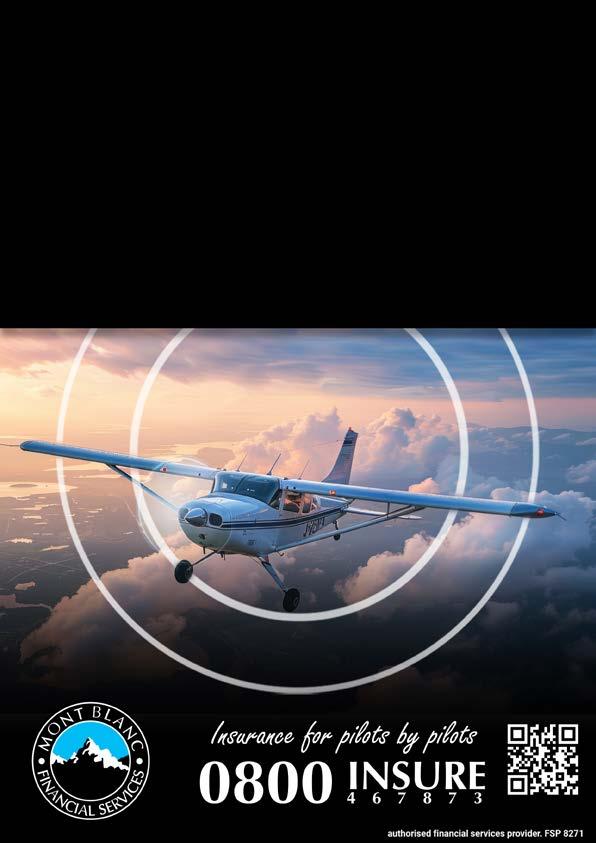
www.vioaviationsolutions.co.za
www.mbfs.co.za a PRETORIA
Ardent Aviation 082 784 0510
www.ardentaviation.co.za a a a yolanda@ardentaviation.co.za
Vektor Aviation 012 247 5010
www.vektoraviation.co.za a CAPE TOWN
Litson and Associates (Pty) Ltd
+27(0)21 851 7187
safety@litson.co.za NATIONAL iTOO
www.litson.co.za *FSF BARS/IOGP/IATA/ICAO/CAP 437 a
www.itoo.co.za a
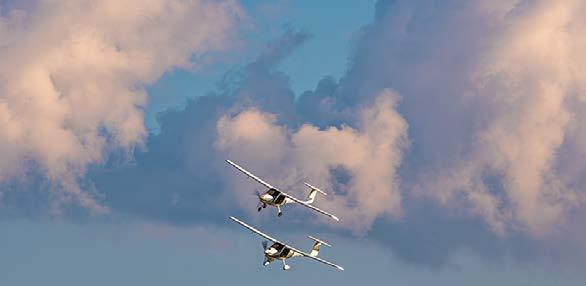
HELD from 6 to 9 March at Middelburg Airfield, 2025 featured a number of firsts. Notably, it was expanded to include Thursday and an airshow on the Saturday.
Using the first weekend in March hopefully misses the last of the summer rains and high temperatures. 2025
was particularly fortunate in that the weather improved from one of the wettest February’s ever.
Participation from sponsors, exhibitors, aviators, enthusiasts, Aero Club sections, the Middelburg Aero Club and the CAA did not disappoint.
The Aero Club has been holding the Airweek at Middelburg from 2018 (previously it was at Parys) and only missed 2020 due to Covid. Aero
Club Chairman Rob Jonkers says that the airfield and setting “is ideal for a large fly-in,
WORDS: ROB JONKERS & LAURA M c DERMID
IMAGES: PIETER CRONJE

to a point where we can probably name this event as our own mini-Oshkosh.”
ABOVE: Henley Air's HEMS Bell 407.
Hosts the Middelburg Aero Club went all out to create the facilities and ambience that has become Airweek. As Middelburg is reasonably close and accessible to most of our up-country aviators, visitors
came from further afield. This year there were fly-in visitors from the Free-State, as well as from Cape Town, and KwaZulu Natal. From the north, a large contingent from the Soutpansberg Club as well as Microlighters from Potgietersrus arrived.
International visitor Linda Sollars of Sling fame gave a fascinating fireside talk on the Friday evening.
Setting began early Thursday morning, with exhibitors arriving and the tent city popping up. With 30 rental tents to accommodate 60 visitors plus other campers, there were around 100 campers.
Friday dawned with some fog which burned off quickly, allowing many more exhibitors to arrive It was interesting to see
large contingents of gyroplanes and microlights create their own ambience. There was even a makeshift movie theatre set up by the under-the-wing campers.
Friday’s flying included an air navigation rally hosted by SAPFA, a STOL competition and validations for the airshow to take place on Saturday. It made for a very busy airspace in the afternoon with unfortunately limited ATC. The STOL competition first featured in 2023 and is becoming a very
for aerobatic demonstrations, with a number of participants in various classes.
The SAMAA Model Flyers also featured, with Steve Joubert flying a very large beautifully detailed BAE Hawk as the award winner for the day. With over 200 visiting aircraft, parking became a challenge after lunch. During the Friday and Saturday, the exhibitors were very busy with visitors to their stands, and many forums were taking place on a number

popular event, such that not all could be accommodated in the time available.
Saturday started crisp and clear, then radiation fog ensued for about an hour, which after lifting, turned out to be a stunning day. Balloons, paragliders and many microlights were out on dawn patrol taking advantage of the still air.
The Aerobatic Club arranged
of subjects such as Rotax engines, Approved Persons, Flying Skills and proficiency. It was great to see the good participation of aviators at each of these forums, as it is always challenging when there is so much activity outside to capture the attention. The EAA also held their aircraft judging competition, led by Pierre vd Walt and his team of aircraft technicians, who judged the build /restoration
standard of many entered aircraft.
For Saturday afternoon a small airshow had been organised, to bring public participation to Airweek. The airshow was a late add-on to Airweek and once the CAA approved it, it was
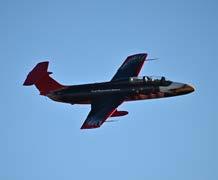
agreed that the airshow would include as broad a spectrum of recreational aviation displays, from Tiger Moths to jets, to showcase different types of aircraft.
The air show commenced with the Emergency Services parade at 2.00 pm, followed by Parajumpers, with Gilly Muller sporting the SA flag, followed by a full 4-ship Flying Lions Harvard display

and thereafter Dr Andre Coetzee in the Henley Air Bell 222.
Notable firsts were Sling Aircraft who demonstrated their High Wing and Low Wing TSi’s, and Absolute Aviation, their two Pipistrels, one of them the first certified all electric plane in SA. Grant Timms flew the L29 Austrian Eagle Jet as a fitting end to the airshow and the spectators enjoyed the show.
For the Saturday evening a scrumptious dinner was arranged. Prior to dinner short speeches and various fun and EAA awards were presented, by the inimitable Karl Jensen, as well as thank yous to all those involved in making the weekend a success, in particular Cobus Peens, the Chairman of the MAC, and Richardt and Irene Lovett, whose facilities they graciously provided for the event.
Sunday was essentially a pack up and go home day. By 9.00 am most of the camp site had been packed up and flights were heading homewards.
Rob Jonkers says, “As the Aero Club Airweek gains momentum as an institution it will come with growing pains, but that is par for the course to enable us to secure the best event our Recreational Aviation community can offer.”







‘Help us with the planning of Airweek’….it will be fun they said. Turns out it was more like opening the gates to hades and unleashing the hounds from the underworld.
WORDS: LAURA M c DERMID
NONETHELESS,
I said yes, and the loud gnashing of teeth was mine, not the hounds.
I reluctantly pulled on my big girl panties and made myself equal to the task of securing sponsorships and guest speakers for Airweek 2025. Rob Jonkers, incumbent chairman of the Aeroclub, amassed a
team of volunteers, all of whom I concluded must suffer from varying degrees of masochism.
It’s not like any of us didn’t have day jobs, in fact many of us juggled multiple jobs. However as the saying goes, if you want something done, give it to a busy person.
And as if organising the event wasn’t difficult enough, Rob decided to go ninja and throw in
ABOVE: Rotax and Sling took centre stage.
an airshow which added another layer of complexity. At the first meeting with the CAA held at their HQ in Midrand in early December, I was apprehensive. However, the proposal was well received and even encouraged.
Give it to a busy person.
Hosting an airshow meant expenses would escalate by at least 30%, primarily due to the high cost of third-party insurance. To offset this, I began reaching out to key players
in the aviation industry for sponsorships.
Given the success of last year’s Rotax workshops, Niren Chitoki of Comet Aviation Supplies was the first to seize the opportunity to be the headline sponsor. Sling Aircraft, the largest purchaser of Rotax engines in South Africa, quickly followed suit, while Absolute Aviation stepped up with a generous contribution.
Even though Century Avionics and CSA Aviation Cirrus Aircraft opted for smaller sponsorships, their support was equally valuable. Whilst negotiations with these companies was under way, potential exhibitors were identified and contacted; a full endeavour in its own right.
Goitse Diale, the dynamic aircraft broker set to take over from Rob as Chairman, had the unenviable task of organizing and managing the airshow. He set about creating a team of individuals who spent the next few weeks contacting potential participants and pulling rabbits out of hats.
In the background, Cobus Peens, chairman of Middelburg Aero Club (MAC) and his incredible team were industriously preparing the airfield and coordinating a plethora of tasks ranging from acquiring police permission to securing enough fuel for four days.
The ever helpful,
magnanimous husband and wife team Richardt and Irene Lovett went out of their way once again to make sure that their hangar and the facilities would be available both on the airside and on the public side for Saturday’s airshow.
speakers and organising the workshops.
Noteworthy is Linda Sollars, best known for flying her High Wing Sling from South Africa to Oshkosh, who was our guest speaker.
Other speakers were:


When I wasn’t busy running my own business, managing the sales of the first SA Flyer print magazine in 5 years, fulfilling my tasks at the EAA, or running a household, I was sourcing
Dean Polley owner of SSASS - ADS-B transponder requirements. SA Flyer columnist Megan Stevenson, founder of Infinite AviationSkills Fade and Proficiency.

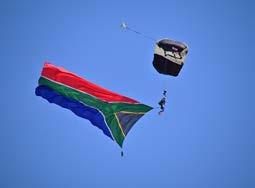


Pallavee Apigadoo—the young lady who flew from Johannesburg to Mauritius, discussed the equipment sponsored by Century Avionics. Bertus Janse van Rensburg from Absolute Aviation with the Pipistrel Electro Velis. Andrew Pitman the CEO of Sling Aircraft, and Niren Chitoki - on 916is Rotax fuel injected engines, plus a demonstration of oil change and carb setting on the Rotax 912 ULS.
The weather was stressful. Doomsday pessimists were posting videos of a flooded Middelburg. So much time, effort and money had already been invested in this project, that my mind would not allow me to consider “what if’s”.
On Thursday the 6th, EAA 322 Chairman Neil Bowden and I departed Jack Taylor for Middelburg Airfield just after 08h00. Over the past few years the EAA have combined their annual convention
with Airweek, which is a win for all.
The weather gods took pity on us and watery rays of sun feebly penetrated the thick haze that lay like a pall over the highveld. Approaching FAMB, we were greeted by the familiar voice of Safety Officer Nigel Musgrave who, together with his team, safely guided the aviators over the next four days.
Once on terra firma, we hurried to set up our stands, after which I prepared for the arrival of the exhibitors, whose space allocations were my responsibility.
The airfield teemed with energy as stands sprang up and banners were staked into the ground, while the Lovett hangar underwent a remarkable transformation into a dynamic space serving as both a lecture hall and a dining room.
Friday morning ushered in a cerulean blue sky
which was abuzz with a myriad of arriving aircraft. The sound of engines and excited chatter was soon drowned out by Radio Jensen announcing the day’s proceedings.
Branded gazebos transformed the grounds into a sea of colour, and banners and flags snapped briskly in the light breeze. Watson Mahlangu from the CAA opened the floor at 08h30 and despite numerous sabotage attempts throughout the day by Eskom’s random ‘load-reduction’ curve balls, the talks and forums continued uninterrupted until 16h00.
Gates opened at 12h00 to admit the public to the airshow and I moved the SA Flyer stand to the public side so that I could observe the steady stream of people trickling in. Irene had done an outstanding job of recruiting the local entrepreneurs, and had secured a dozen or so stalls ranging from plush toys to doughnuts.
Brian Emmenis’ booming voice welcomed the crowds and the show was opened by two skydivers Steve Bartels and Gilly Muller, the latter trailing a huge national flag.
Dramatic aerobatics were interspersed with graceful flights by the Slings, Bathawks, Gyrocopters and Pipistrels. Ivan van der Schaar’s magnificent Boeing Stearman was, without a doubt, the show-stopper—the unmistakable growl of its Pratt & Whitney 450hp 985 Jnr Wasp radial engine had me weak at the knees.
As usual, Irene had ensured that the hall was beautifully decorated and that the food was delicious. This year, the awards at Saturday night’s dinner went off without a hitch.
Karma was in a benevolent mood that evening when winner of the Comet prize, Pierre Dippenaar, gifted the Wouxun KG-R76 handheld radio to Karl Jensen, who earlier that month had donated his own radio to an anti-poaching unit.
• FOR THE MOST ENTHUSIASTIC MEMBER
CONTRIBUTION AT AIRWEEK: Karl Jensen
• PIPING HOT AWARD
- HOTTEST AIR
BALLOON: Alan Turner
• AERIAL ANTICS
AWARD BEST
AEROBATICS
DEMONSTRATION - ZU-
WMW RV-7: Machiel du Plessis
• SO FLY AWARD - BEST MODEL FLYER: BAE
Hawk Steve Joubert
• JUMPING FROG AWARD
- BEST GYROPLANE:
ZU-GMR Magni Gyro M22
Robbie Hendricks
• MISCHIEVOUS JUMPER AWARD
BEST PARACHUTING: Gilly Muller
• THE MOSQUITO AWARD - BEST
MICROLIGHT: ZU-TAN Air
Creation TANARG. Robert Gassman.
• FIND MY WAY AROUND AWARD SAPFA FUN
RALLY: JJ le Grange, Ian Wilde
This was the largest Airweek to date. As with anything new, the step change in the organisational structure was not embraced by all, and I copped a fair share of abuse from a couple of disgruntled exhibitors. Accustomed to a relaxed approach in the past, certain individuals found it difficult to fit into a more professional structure, which is critical when hosting an event that relies on significant corporate sponsorships.
From start to finish, I felt like Mario in Donkey Kong, constantly dodging barrels
hurled at me by a deranged ape. The further I progressed, the thicker and faster the obstacles arrived.
There were countless times that I felt like quitting the game altogether, and then I thought of Rob and the mountains of paperwork that he stoically tackled year after year.
Although the final tally

1. Dale de Klerk - 1st place Spot Landing Orion Cub ZU IVS
2. Thomas Morrow - 1st Place STOL KFA Safari ZU IDH
3. Hans de Beer - 1st place Cleco Competition
4. Hennie & Handrè Delport - Best Restoration Piper J3F Cub ZS NAM
5. Susan Prinsloo - Best Warbird DH82$ Tiger Moth ZS BGL
6. Paul Marshall - Best Homebuilt Aircraft
is still not confirmed, it is estimated that 210 aircraft flew in. There were 1,000 people airside and approximately 3,000 members of the public attended the airshow. More than 40 exhibitors made the trek to Middelburg, demonstrating remarkable support for the general aviation community.
We are optimistic, that for the first time in years, the revenue collected from the sponsorships and monies generated by the sale of airshow tickets will cover the costs.
A lot still needs to happen if the goal of being the best recreational aviation event in Africa is to be attained, but this year proved that we are on the right track, and with the correct people
Bearhawk 4 ZU IVV
7. Sylvester de Beer - Best Restoration AM Bosbok ZU ADA
8. Eugene Couzyn - Best Tube & Fabric Aircraft Piper Pa20 ZS DFO
9. John & Chris Shaw - EAA Grand Champion VANS RV9A ZU SRF
10. Ryan Briggs - Most Original Aircraft DHC Chipmunk ZS LJU
11. Richard Moore - for the longest distance travelled to the convention
spearheading the project, it is possible.
The Lovett’s and MAC have invested a huge amount of their time and own money to get Middelburg Airfield to the point where the event is established at Middelburg and more importantly, scalable; therefore the possibility of Airweek happening elsewhere is slim. Although this may seem unfair to the other provinces, I was reminded that when the event was held at Tempe a few years ago, it was poorly attended.
I am still suffering from PASD (Post Airweek Stress Disorder),and cannot see myself doing this again next year. Then again, I’m told that the bad memories fade and will be replaced by all the happy ones. Watch this space.
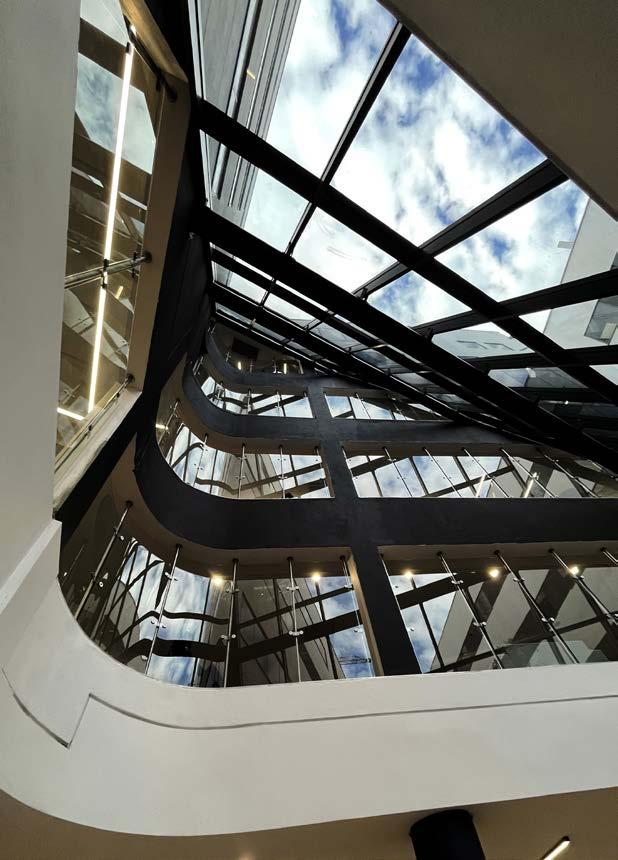

Kenya Airways reported a pretax profit for financial year 2024 after more than a decade of losses.
KENYA Airways declared a pretax profit of 5.53bn shillings ($42.82m) in 2024, compared with a loss of 22.86bn shillings the year before. The airline had been in the red since 2013.
Group Managing Director and CEO Allan Kilavuka highlighted the airline’s dedication to completing its capital restructuring plan to reduce financial leverage and enhance liquidity. He noted that despite global challenges in the aviation industry, the turnaround strategy is yielding positive results.
A big driver of the improved performance in 2024 was foreign exchange gains of 10.55bn shillings, versus a loss of 15.04bn shillings in 2023, as the local currency strengthened more than 20% against the dollar last year.
The airline’s total revenue increased by 6% to KSh188.5 billion, driven by a 4% rise in passenger numbers and a notable 25% growth
in cargo tonnage. Operating profit surged by 58% to KSh16.6 billion, reflecting effective cost management strategies. Additionally, net finance costs decreased by 67% to KSh11.1 billion. The airline is to resume staff pension contributions after three-year suspension.
Kenya Airways fell into insolvency in 2018 after an expansion drive left it with hundreds of millions of dollars of debt. The collapse in international travel during the Covid-19 pandemic, combined with a sharp weakening of the shilling over 20222023 and higher interest rates, made it more difficult to service that debt.
It has been dependent on state financial support, with the government paying off a loan of $150m in January that the airline had received from local commercial banks.
The government has said Kenya’s biggest international airport in Nairobi is operating above capacity and needs modernising.
“We can be proud that the national carrier has produced a profit,” Michael Joseph, chairman of the airline’s board of directors, told a briefing.
Joseph said that improvements at the airport and more aircraft in the airline’s fleet would further boost its performance.
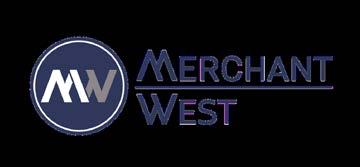


James O’Connell died demonstrating a slow ‘dirty’ roll in an Impala Mk1 at the Saldanha Airshow on 22 March 2025.
JAMES O’Connell is described by the Test Flying Academy of South Africa (TFASA) as “ an aviation legend with over 36 years of flying experience, including 25 dedicated to experimental flight testing.
With 4000+ hours on Rotary Wing and 1600+ hours on Fixed Wing aircraft, his achievements include leading testing for the South African Air Force A109 LUH helicopter and spearheading the Oryx helicopter upgrade.
Additionally, James’s unique experience in Arctic and Antarctic operations sets him apart. A retired
senior officer of the South African Air Force, he advises on flight test matters and holds esteemed positions in aviation associations. At the time of his death, O’Connell was the Chief Flight Instructor for the Test Flying Academy of South Africa.
Our deepest condolences go to his family, friends, and colleagues.
BELOW: James O'Connell was a top-rated jet and helicopter pilot. Image: Dean Wingrin.


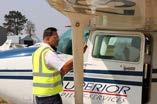



OPERATING FROM GRAND CENTRAL Airport in Midrand, Superior Pilot Services prides itself in its wealth of knowledge and experience in the aviation sector, offering a variety of certified courses, from the Private Pilot’s Licence to the Airline Transport Pilot Licence, Instructor’s Ratings and Advanced training. The school specialises in personal outcome-based training and combines the latest techniques, methods and training aids to maintain a high level and standard throughout. Superior is proud to have been selected as a service provider to numerous institutions like, TETA, Ekurhuleni Municipality, KZN Premiers office, SAA, SA Express and SACAA cadets, however their ideally situated location allows the general aviator and businessman to conveniently access and utilize the same services.
With highly trained and qualified instructors and a fleet of Cessna 172s, a Cessna 182, Sling 2, Piper Arrow, Piper Twin Comanche and R44 helicopter, the school has the know-how and experience to prepare the best pilots in the industry. Making use of a state-of-the-art ALSIM Flight Training Simulator, the Superior Aviation Academy offers unmatched facilities that ensure students’ social needs are catered for and that the training offered is at the forefront of international training standards. The Alsim ALX flight simulator model provided by Superior Pilot Services is EASA and FAA approved and has proven itself worldwide. It provides up to four classes of aircraft and six flight models that cater from ab-initio all the way to jet orientation programmes in one single unit available 24/7.
The school offers a range of advanced courses, including IF Refresher Courses, Airborne Collision Avoidance System (ACAS), GNSS/RNAV, CRM and Multi Crew Coordination (MCC) conducted by its qualified instructors. The school also offers PPL and CPL Ground School and Restricted and General Radio Courses. Superior Pilot Services has accommodation available. The lodge is conveniently located just six kilometres from the airport. All rooms are based on a bachelor’s unit which includes laundry and room cleaning services as well as breakfast. Students have access to the communal lounge, gym and entertainment room, pool and ‘braai’ area.








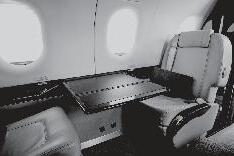
















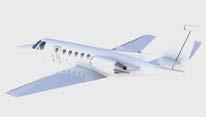




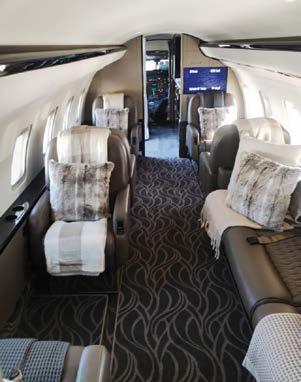

1 -4 April 2025 Aviation Week Zambia
1 - 6 April 2025 Sun n Fun Lakeland Florida
Lusaka Zambia
https://flysnf.org/ 21/April/2025
26/April/2025

Pretoria Air Show
Wonderboom Airshow
03/May/2025 SAAF Museaum Air Show
Rhino Park
Wonderboom
Swartkop Pretoria 10/May/2025 Nelspruit Aiurshow
Old Nelsruit Airport 17/May/2025
New Tempe Airport AirShow
20 - 22 May 2025 EBACE Pal Expo Geneva
22 - 24 May 2025
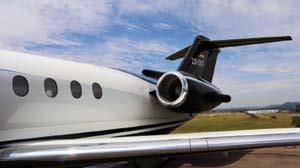
New Tempe Bloemfontein
https://ebace.aero/
Presidents Trophy Air Race: Bona Bona david@pilotinsure.co.za cell: 073 338 5200
31/May/2025 Shuttleworth Military airshow Old Warden UK https://www.shuttleworth.org/product/military-airshow-2025/
27 - 31 May 2025 Zimbabwe navex
https://zimairrally.com 31/May/2025
Newcastle Airshiow
Newcastle KZN 16 – 22 June 2025 Paris Air Show Paris-Le Bourget https://www.siae.fr/en/
25 -27 June 2025 AERO South Africa Wonderboom https://aerosouthafrica.za.messefrankfurt.com/pretoria/ en.html
28/June/2025 Virginia Air Show
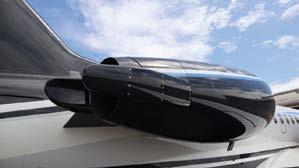

Virginia Airport Durban 18 - 22 July Royal International Air Tattoo Fairford UK https://www.airtattoo.com/
25/July/2025 Polokwane Airshow Polokwane Limpopo
21 - 27 July 2025 EAA AirVenture Oshkosh
20/September/2025 Rand Airshow
Contact Neil Bowden: 084 674 5674 info@airadventure. co.za
Rand Airport Germiston 17-21 November 2025 Dubai Airshow UAE https://www.dubaiairshow.aero/
25 July 2025 Polokwane Airshow Polokwane Limpopo
21 - 27 July 2025 EAA AirVenture Oshkosh
20 September 2025 Rand Airshow
Contact Neil Bowden: 084 674 5674 info@airadventure. co.za
Rand Airport Germiston 17 - 21 November 2025 Dubai Airshow UAE https://www.dubaiairshow.aero/




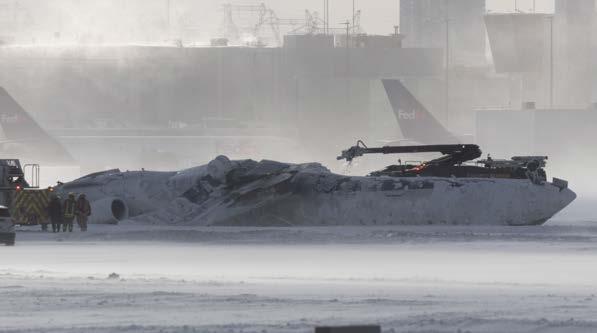
The first quarter of 2025 has started with several notable accidents globally. Within the first two months of 2025, three plane crashes occurred in the United States - these incidents highlight a concerning trend in aviation safety and the resultant fatality risk for industry.
WORDS: MEGAN STEVENSON
FATALITY risk, as defined by IATA, is the likelihood of a person perishing in an accident per million flights. This
provides a standardised metric to assess and compare safety performance across the aviation industry.
The fatality risk has shown a general improvement over the past five years with 2023 reaching a record low of 0.03 due to one fatal accident resulting in 72 fatalities. In 2024,
seven fatal accidents, totalling 244 onboard fatalities increased the risk to 0.06.
2025 has already seen 78 fatalities within the first 90 days of the year - a stark increase, but still well below statistics in previous decades.
The aviation community is actively investigating these events to identify underlying causes and has attributed possible causal factors to ATC shortages, increased air traffic, airspace congestion, pilot shortages, low experience levels as well as supply chain disruptions and financial constraints on maintenance and equipment. Simply put –the demand is exceeding the capacity and, possibly, the capability of the industry.
The industry faces a significant global pilot shortage, with projections indicating a persistent gap between pilot supply and demand. In 2022, Oliver Wyman projected that the aviation industry could face a shortage of nearly 80,000 pilots by 2032, with demand outpacing supply in most regions. In South Africa, airlines continue to grapple with high attrition rates, with some losing up to 20% of their crew complement to international carriers annually.
This industry-wide pilot shortage has compelled airlines to accelerate training programmes and hire less experienced pilots. Airlines report gaps in skill sets and insufficient baseline knowledge among new recruits, especially when transitioning from propellordriven aircraft or single crew operations into the multi-crew jet environment.
This underscores the urgent need to rethink pilot training models to develop crew adaptability to ensure a seamless and safe transition into airline operations.
cause of accidents. ICAO and many other industry bodies attribute human factors as contributing to over 70% of accidents. Understanding why humans make mistakes and identifying the most common human errors is crucial to enhancing aviation safety.
In order to solve a problem, one must first understand it - Aristotle
Traditionally, pilots built experience over time before joining airline operations. However, today’s market demands low-hour pilots to transition directly into structured airline environments. This has created a competency gap, where pilots lack essential multi-crew cooperation, structured decision-making, and threat management skills, before joining an airline.
In a multi-crew airline environment, the combination of low-time crew members grappling to find their footing coupled with an overburdened pilot picking up the load (so to speak), could potentially set the scene for an error-chain with fatal consequences. It is a widely-accepted that humans, when under pressure, make mistakes.
Despite the improvements in aviation safety over the years, human error remains a leading
Pilot error is often categorised into active and latent errors (Reason, 1990). While active errors are immediate mistakes (such as misreading an instrument), latent errors are systemic and often result from inadequate training, cockpit design issues, or regulatory oversights (Shappell & Wiegmann, 2000). These errors may remain dormant until they contribute to a critical situation. Rapid onboarding, as a result of the pilot shortage and skills attrition, can result in inadequate preparedness for complex flight situations, thereby increasing the likelihood of errors, incidents and accidents.
To mitigate these risks, human factors training must start earlier in a pilot’s career, rather than being introduced only later at the airline level. Research consistently highlights that human errors related to situational awareness, decisionmaking, overconfidence, complacency, and risk management, contribute significantly to aviation accidents (Craig, 2001).
Gordon Dupont’s ‘Dirty Dozen’ outlines 12 key human factor elements that contribute to aviation errors, ranging from crew resource management concerns (communication, teamwork, situational awareness) to cognitive influences (fatigue, distraction and stress). Add in pressure, a lack of knowledge and resources and the industry finds itself in a precarious position.
In the airline sector, IATA’s human factors strategy emphasises skills development on aspects such as communication, situational awareness, decision-making, teamwork,
leadership, adaptability, and workload management—skills that should be reinforced throughout all stages of training.
A competency-based, outcomes-driven training approach is critical to addressing these challenges. Airlines currently utilise Scenario-Based Training (SBT), Line-Oriented Flight Training (LOFT), and Threat and Error
that require adaptive decisionmaking – a skill that can be specified and measured. Research shows that pilots trained in SBT demonstrate superior performance under stress (Fletcher et al., 2016). Progressive simulator training, including a focus on the cognitive skills during normal and abnormal flight scenarios, is an affordable yet impactful solution.
In conjunction with flight training (whether aircraft or simulator based), CRM training should begin at ab-initio level to reinforce communication,
Management (TEM) to improve crew performance and enhance decision-making. However, these concepts must be integrated earlier into the flight training process.
Industry recommendations include an improved use of simulation in training with an evidence-based approach to CRM Elements.
Flight simulators expose pilots to high-risk scenarios without real-world consequences. SBT immerses pilots in realistic scenarios
threat and error management (TEM), decision making, problem-solving and workload management. This is particularly important when training individuals younger than 25, as the prefrontal cortex, the part of the brain responsible for executive functions, only fully matures in the mid-to-late 20s. Individuals with a developing prefrontal cortex may struggle with decision-making, stress regulation and workload management – all critical cognitive skills for safe crew
performance.
Simulated high-stress decision making scenarios can be used to enhance pre-frontal adaptability, while CRM, TEM and structured decision-making models should be integrated into ab-initio to compensate for the developing brain. In addition, stress-regulation techniques should be introduced to support workload demands.
A 2003 study conducted by the University of South Australia identified 32 human factor skills that flight crew should demonstrate to effectively manage errors through avoidance, detection, and response measures.
These specific measurable and observable skills were categorised into two primary dimensions – Cognitive, and Interpersonal Skills.
Cognitive Skills include Information Management (Efficiently collecting, processing, and utilising relevant data during flight operations), Planning and Mental Simulation (Anticipating potential scenarios and preparing appropriate responses through mental rehearsal) and Monitoring and Evaluation (Continuously observing flight parameters and assessing situations to identify deviations or emerging threats). Team and Interpersonal Skills include communication and task
management.
The study emphasizes that integrating these competencies into training programmes can significantly improve flight safety by equipping crews with the necessary tools to manage errors effectively.
To achieve this, flight schools, airlines and industry must collaborate in expanding CRM and TEM training at the ab-initio level while enhancing simulation-based training to focus on real-world challenges. To effectively prevent errors, pilots must be trained to develop cognitive competencies that align with ICAO’s CBTA (Competency-Based Training and Assessment) model which include situational awareness, decision-making and problemsolving, pattern recognition, workload management, memory and procedural recall and cognitive adaptability.
These principles are widely used in airline environments, but they must also be adapted for general aviation and ab-initio training. This can be achieved by:
1. Making use of Pre-Flight Briefings
Introduce and make use of formal pre-flight crew briefings to include structured Threat and Error assessments such as PAVE (Pilot, Aircraft, enVironment, External Pressures) and IMSAFE (Illness, Medication, Stress, Alcohol,
Fatigue, Emotion) in order to identify threats, errors and potential undesirable aircraft states that could occur.
2. Objectively assess situational awareness
Endsley’s Model of 1995 requires a three-tiered process of situational awareness – the ability to detect a hazard, the ability to perceive or understand the nature of the hazard and, the ability to project the impact and consequences of the hazard in addition to possible mitigation strategies.
This can be objectively assessed by asking: Has the pilot detected the hazard? Does the pilot understand the nature of the hazard? Can the pilot project the potential outcomes and risk of this hazard? Has the pilot / Can the pilot formulate a mitigation strategy? Can the pilot recognise patterns and common risk factors, such as weather deterioration or ATC congestion?
3. Include structured decision-making models Models such as DECIDE
(Detect, Estimate, Choose, Identify, Do, Evaluate) and FORDEC (Facts, Options, Risks, Decision, Execution, Check) should be applied in flight scenarios as early as possible during ab-initio training in order to normalise and support cognitive function and task loading in the crew member.
4. Reinforce error avoidance, detection and response behaviour
Educate the pilot and emphasise the cognitive skills required for Information Management, Planning and Mental Simulation, Monitoring and Evaluation as well as the interpersonal skills identified for crew resilience.
Human factors remain a critical challenge in aviation, but by evolving training methodologies, the industry can significantly reduce pilot error, enhance safety culture, and support a sustainable aviation workforce. The aviation industry cannot rely solely on increasing pilot numbers to solve the pilot shortage—it must also develop better-prepared pilots. By introducing airline-level human factors concepts earlier and shifting to competency-based training, we can enhance pilot resilience, improve safety, and create a more robust pipeline of
airline-ready aviators.
For more information, or assistance in training development, reach out to Infinite Aviation.
Visit: https://infiniteaviation. co.za/home/ hello@infiniteaviation.co.za
+27 61 097 7088 that lets pilots work the avionics without touching the screens.
Pilatus also gave the PC-12 Pro new control yokes, similar to those found on its PC-24 jet.
The PC-12 Pro’s cabin has been updated to include a natural wool carpet, new cabinet designs and improved storage capacity, says Pilatus director for product management Flavia Vianna.
Performance is unchanged. The PC-12 Pro cruises at up to 290kt (537km/h), has a 30,000ft altitude ceiling and maximum range of 1,830nm (3,389km).
j
BELOW: The Crew Resource Model has been widely adopted across many industries.



A 2025 snapshot of Africa’s helicopter industry provides a picture of an industry faced with significant challenges, particularly regarding the lack of confidence in the economy and the weak rand making helicopter operations prohibitive. The southern Africa helicopter industry remains heavily reliant on quasi-government, oil and gas, military and security needs. These range from air force operations to offshore services, forest fire control, medevac and ground force security support such as for car tracking and anti-poaching operations.

The current plight of the industry is aggravated by the failures of the regulator. Helicopter operations require specialist skills and knowledge on which to build a sustainable and safe operating environment.
and personnel intensive and their operation has to meet extremely high maintenance standards due to the often harsh conditions under which they operate.
the Huey, yet for twice the cost
However, the SACAA has managed to set back the essential process of developing qualified engineers by setting technician qualification standards that are unique in the world.
out. Given how few of certain types of helicopter there are in South Africa, this may be expected to take an absurd 400 years. And so the regulator is effectively starving the industry of essential skills development.
Helicopters are essential for the fight against gang violence, drug smuggling and many other three times as effective as
Helicopters are also capital
The SACAA is reportedly not prepared to accept a factory maintenance course as sufficient qualification. It requires a further 400 hours supervised experience before a technician may sign a helicopter
The South African Police have been subject to budget restraints that led to the once unimagined acquisition of piston-engined helicopters. The Police Air Wing is successfully operating Robinson R44s, although they retain a larger fleet of Airbus AS350 B3s.
crimes. Both helicopters and fixed-wing aircraft could also be used to combat truck hijackings. The need is there, yet like the SAAF, the ability of government to fulfil that need is clearly lacking.
The Forest Fire Association (FFA-Assets) provides aerial firefighting capability to the government’s Working On Fire which flies an approximate 4,000 hours and responds to an average of 300 fires annually.
Fire fighting is a high-profile helicopter operation in South Africa. The most significant operator is the Nelspruit-based FFFA Assets, which typically operates 10 Bell UH1H helicopters
and contracts in additional helicopters as needed.
South Africa’s single Sikorsky UH-60 Black Hawk helicopter has now proven its worth and has become part of the mainstream firefighting operations. Its capability is making headlines around the world.
South Africa’s unique fire-fighting capability has shown that the Black Hawk can be three times as effective as the Huey, yet for twice the cost. It has proven its effectiveness both in the Cape and in Lowveld fire operations and the Black Hawk now has a number of secondary private sector contracts.
The Working on Fire fleet of Bell 205 ‘Hueys’ provides airborne resources for the South Africa’s two seasons: the Lowveld winter and Cape summer, which runs from June to November and December to April respectively. These active periods allow for an intensive maintenance regime during May before both helicopters and fixed wing aircraft are returned to service.
The charter industry embraces both government VIP use as well as corporate. Although the ad hoc charter industry services its clients with a mixture of mostly light single-engined helicopters, some companies have invested in twin engined types like the Agusta A109 and the Bell 222 and 230 series.
Given the lack of appetite and capital for investment, companies are adopting innovative approaches to used helicopter acquisition. One such is Rand-based Henley Air, which has built up a fleet of Bell 222UTs used for medevac and charter.
Many air forces and paramilitary organisations have adopted the civilian contractor route, which has been of great benefit to private contractors. Starlite and others have been kept busy training pilots from all over Africa.
j



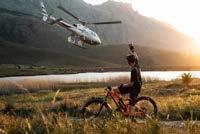





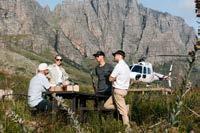



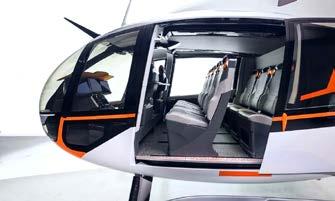
WHILE some people still prefer the old Heli-Expo name, the new Verticon designation did nothing to diminish the stature and level of interest in this year’s event held in Dallas, Texas.
More than 15,000 visitors from all over the world filed through the gates, with every major helicopter manufacturer represented as part of more
than 600 exhibitors who peddled their products. While the exhibitions are always interesting, this event encourages networking, meeting customers, suppliers, partners, and competitors to discuss the state of the industry, new products, and to simply cut deals.
With all these activities playing in the background,
centre stage is always the announcement of new products, and this year the star of the show was Robinson’s announcement of the new R88.
For months leading up to this year’s event, rumours circulated about the R88. In keeping with the Robinson Helicopter Company’s naming convention following the R22, R44, and R66, everyone knew that it would be a bigger helicopter
than any of their previous products.
With the assumption of a larger aircraft we anticipated that it would be turbine-powered.
BELOW: The lack of the main and tail rotor at the launch left unanswered questions.
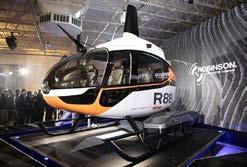
We also knew that it would be unmistakeably Robinson.
With this said, few, if any, were prepared for what we saw: a 10-seat flying SUV with a very generous 1,000 shaft horsepower engine. This is Robinson’s first new helicopter after the passing of the company’s founder, Frank Robinson in 2022. It is also the first announcement by the company’s new CEO, David Smith.
Before we go any further, please understand that everything I’m about the share will likely be biased. I’m a Robinson fan and have been since flying the first little R22 HP many decades ago.
the helicopter’s simplicity. All products following those initial R22s share the same philosophy, and it would appear that the R88 is not going to disappoint in that regard either.
As Smith’s announcement of the R88 unfolded, we started assembling pieces of the puzzle. Behind him on the convention floor was a very interesting mock-up of the R88 in white base coat with dark grey and orange accents. It did, however, not have a main rotor assembly, nor did it have a tail boom, so these developments will be watched with interest.
We all craned our necks to get a better look at the interior, which appeared to show many, many seats… in fact, we later learned that it is going to be a 10-seater helicopter.
Jaws dropped. This is unchartered territory for Robinson.
This fine little rotorcraft was not equipped with either a governor, rotor brake and aux fuel tank, nor did it have “high”-inertia blades. Not that I think any R22 could ever be accused of that.
I remember how two 85kg South Africans crammed into an R22 HP at Grand Central Airport during summer made for very interesting performance take-offs while our safe fuel endurance added up to much less than one hour.
The one thing that has endeared me to Robinson since those very early experiences is
At first glance, it looks unmistakeably Robinson. Not a handsome appliance by any stretch of the imagination, but over the years we’ve experienced Robinsons to be very capable flying machines despite their unassuming appearance. The R88 looks to follow that DNA.
The lightweight frame is going to be welded steel with aluminium skin and limited use of carbon fibre. We later learnt that Robinson is planning to equip the R88 with a two-bladed teetering main rotor system and a conventional two-blade tail rotor. As with the R66, the R88 is going to be
turbine-powered with FADEC, but that is where initial similarities to the R88’s older siblings end.
Now it gets interesting. The list of features on the R88 is where Robinson traverses new territory. None of the features in isolation are in any way groundbreaking, but the sum of the parts making up the R88 is where it promises to be without equal in today’s new helicopter market.
Ø From the outside, the most obvious new feature is rear passenger sliding doors on both sides. The front doors are hinged in typical Robinson fashion, but the rear doors hint at a new level of versatility for Robinson.
Ø The mock-up at Verticon showed a highdensity seating configuration with two
pilot seats up front plus two rows of four individual seats. These are the quick-release type, and the first row of passenger seats can be flipped around to face aft in a club-seating configuration. We don’t know if the company is planning to offer a more luxurious interior, but after-market suppliers are likely to step up with innovative designs if there is any hint of a demand for such a layout.
Ø A major improvement in versatility in any helicopter’s design is a flat floor. The mock-up features a flat floor design all the way from the baggage area to the cockpit. This allows for quick-release reconfigurable interiors which may be easily customised for any specific mission, such as ambulance, utility, cargo, offshore,

or corporate passenger configurations.
Ø Rear-opening cargo door. While this hatch is located under the tail boom, Robinson describes it as a “fold down truck-bed style” door, which we can only assume to mean that it’s going to function in the same way as the tailgate on an F150 and possibly be load-bearing. Smith hinted at a different tail rotor design, and we’re hopeful that the manufacturer will unveil some innovation that isolates the tail rotor from crew who are loading stretchers or cargo under the tail boom with rotors spinning in close proximity.
Ø Glancing into the cockpit, by biggest whooo-hooo moment is the sight of two separate cyclic controls. While quintessentially Robinson, the older teetering bar layout did have its detractors, and I certainly am one of them. The big innovation with this new setup in the R88 is that either set of controls may be removed, and the helicopter will be certified to be flown from either seat. The mock-up was also equipped with a set of remote instruments in the floor, next to the lefthand cockpit door. This allows the pilot to monitor critical engine and drivetrain parameters while leaning out of a normal seating position to observe an underslung load, for example.
Ø Staying in the cockpit, we learned that the R88 will be equipped with a Garmin G500H TXI system with touch screen displays and synthetic vision. This product has been used in several helicopters, especially as a retrofit option, and in this choice, Robinson remains true to their philosophy of keeping things simple. Garmin offers a remarkably capable range of products with excellent customer
support and ease of replacement or upgrade.
I think this is an intelligent choice given some of the more sophisticated and costly alternatives. However, I do hope that Robinson improves the design of the silly instrument panel glareshield as fitted to the mock-up.
Ø In tandem with the G500H capabilities, the R88 will have a 4-axis autopilot setup and will be certified for single-pilot IFR. The system also generates aural warning for terrain awareness (TAWS) and other critical parameter alerts.
Ø Power comes from a single Safran Arriel 2W engine producing a very healthy 1,000 shaft horsepower, although Smith did indicate that not all those horses will be whipped into action for the R88.
The choice of engine caused a few muted comments as Robinson chose a European product over American alternatives. The reality, however, points to a solid decision as derivatives of this modern engine have been well proven in a range of applications in recent years and it offers unrivalled weight and efficiency benefits. These are likely to be critical factors when designing a 10-seat single-engine utility helicopter.
Ø Robinson will, for the first time in any of their products, offer a high-skid option. This paves the way for the installation of a belly tank to be used for aerial firefighting
or crop spraying operations. The highskid option should also be an attractive option for utility operators during off-airport landings and may very well make the loading of stretchers much easier for EMS applications.
Ø HUMS. In my opinion, this is one of the biggest under-valued advancements for Robinson in the R88. For those not familiar with the product, HUMS is an acronym for Health and Usage Monitoring System. The technology works on the principle of continuously monitoring the vibrational frequency of a wide range of dynamic components within the engine and drivetrain. With a large dataset, it is possible to analyse and predict when a component is producing abnormal readings which point to imminent failure or identifies excessive wear. The system is used both for preventative maintenance and as a safety warning system.
landing gear, emergency floatation, wire strike protection, single-pilot IFR, and 4-axis auto pilot. We do not know which of these will be standard on the base model, but we do know that Robinson likes to offer a package for each application, making several options “standard” within that package.
We also know that nearing certification, more options will be offered, either by Robinson or aftermarket manufacturers. I can already imagine a removable auxiliary fuel tank, a VIP cabin, search light, a range of cameras, and probably cockpit NVG capability.
It is interesting to note that HUMS reports and warnings are typically not available in the cockpit and data is only downloaded and analysed as a postflight maintenance function. In the R88, a datalink is used to send HUMS data to a ground station, which can process and identify any anomalies within minutes. How this information is communicated to the cockpit and how it influences the crew’s decision-making, remains a topic of debate.
Options, some of which we already discussed, for the R88, include a cabin air conditioner, EMS (Emergency Medical Service) configuration, skidmounted cargo basket, cargo hook, high-skid
Market positioning and current competitors. Robinson presented a flying Swiss Army Knife with the introduction of the R88, leaving us a little overwhelmed of how to put this new Robbie to use. The obvious role would be to cram 9 paying passengers into the utility-style seats for sightseeing or air tour flights. It does appear to be a little cramped in the back when you fill all the seats, and outside visibility might suffer for the non-window seats. In this market sector the current undisputed champion is the formidable Airbus H130 with its comfortable cabin and great visibility from all seats. Depending on options, the Airbus will likely be more expensive than Robinson’s $3,3 million launch price, and it does

not have the same luggage capacity as the Robinson appears to offer.
Staying with passenger operations, the welcome addition of a skid-mounted cargo basket in tandem with a very generous baggage area will prove to be popular with heli-ski or hunting / charter operators, provided that Robinson’s twobladed rotor systems are up to the task of making good use of the available engine power in high altitude operations. These profiles of flights are mostly conducted in remote mountainous regions.
Private / corporate or VIP transport with a more comfortable cabin layout appears to be a good niche market for the R88. Current private owners of Bell 206, Bell 407, or R66 helicopters might
look at the R88 as a viable alternative which offers a larger cabin, more luggage space, and more safety features. The bogey in this argument will again be the questions around the teetering rotor system. Will it be as smooth as a 4-blade setup, such as the Bell 407 or AW119, and will it match the cruising speed of these competitors?
As a HEMS (Helicopter Emergency Medical service) platform, the R88 certainly offers a compelling option. A large configurable cabin, rear cargo door, sliding passenger doors, single-pilot IFR, and low operating costs are attributes that should attract a large amount of interest from operators currently flying the Bell 407, H125, or AW119. Contract requirements for multiengine helicopters will disqualify
the R88 from competing, but the single-engine HEMS market might prove to be a natural habitat for the R88.
The utility sector encompasses operations such as long-line underslung work for construction, survey work, crop spraying / agricultural work, power line maintenance, firefighting, and general offsite support. We currently see a wide range of helicopters perform in these sub-sectors, which include types such as the MD500-series, Bell 206, Bell 407, Airbus A-Star / H125, and AW119. Older models such as the discontinued Bell UH-1 under civilian utility certification also offer cost-effective solutions. The R88 checks all the boxes for what these aircraft are currently required to do.
Sliding cabin doors, 3,500 lb
cargo hook, large cargo space, high skid gear, and a maintenance-friendly simple design, are factors that might convince operators to give the new Robinson some serious consideration.
Finally, the offshore market is surely also on Robinson’s radar. The reality, however, is that the market for offshore single-engine helicopters is quickly diminishing with only a few Bell 407s and a handful of AW119s still serving in that role. With bigger oil & gas platforms situated further offshore, the market has evolved to require long-range multi-engine helicopters. There simply does not appear to be a future for a single engine helicopter in this sector.
It feels like Robinson might be trying to punt the R88 for too many roles. It appears that it’s a helicopter that no-one asked for, but I do have some faith in Robinson’s research in exploring these market segments. In very simplistic terms, it’s a 10-seater, single pilot IFR, single engine helicopter. There are no direct competitors matching this basic description in today’s market, and yet there are multiple worthy competitors in
each of the sub-markets that Robinson is targeting with the R88.
Preliminary performance figures suggest that a 2,800lb payload, 350-mile range, and 3.5-hour endurance will be adequate, although it certainly does not redefine any performance benchmarks. Further, we all know that these figures mean nothing until we see how the prototype performs in testing. We have no official indication of performance parameters such as hover capability and cruise speed, although we do know that the Arriel engine will be up to the task.
In my opinion, Robinson missed a golden opportunity to equip the R88 with a fully articulated rotor system. Their teetering two-blade design is certainly a Robinson trademark, but the ageing design does suffer from some legacy issues such as mast-bumping, while it can simply never be as smooth and efficient as a four or five-blade setup.
Now, we wait. According to David Smith, the prototype will begin testing later this year, and full certification will be “before the end of the decade”. In my impatient mind, that’s a very long time to find out if my admiration for Robinson Helicopter Company has been misplaced all these years. I’ll

The R88 - The First All-New Robinson Helicopter in 15 Years.

Edge Aviation CC Hangar A1, Nelspruit Airfield, Kaapsehoop Road, Nelspruit, 1200
+27 13 741 3654 / 013 741 4835 | Cell: 082 450 2097 | www.leadingedgeaviation.co.za

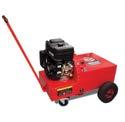

The Red Box range of jump start batteries and aircraft start units are the ideal solution for starting the majority of DC aircraft. They are designed to start aircraft from the very smallest up to the largest business jets.
This Red Box unit combines a petrol engine with a bank of batteries to offer the slickest combination unit in the world. The weight and size of this unit is unrivalled, making it the obvious choice of Business Jet owners and operators. It allows for starting and continuous power away from the normal hanger environment so that aircraft on the flightline can be serviced as an alternative to being moved via an aircraft tug into the hanger.


Once every blue moon an innovator comes along that completely disrupts an industry and sets the bar far higher.
ROBINSON Helicopters is a perfect example of such an innovator. When it originally launched its R22 back in 1979 it transformed the industry by making helicopter flying far more affordable and accessible. The change was so profound that almost anyone who’d ever had learning to fly a helicopter on their bucket list, was able to do so.
The R22 was the ultimate helicopter pilot maker; small, light, nimble, and far more affordable than the legacy helicopters of the time. It taught the basics of helicopter flying to tens of thousands of neophyte pilots. And then, 101 years later, Robinson needed to make it more useful, so they upgraded the R22 to the 4-seater R44, albeit still powered by a clunky Lycoming 260 horsepower piston engine.
Another 15 years went by and then, in 2010, Robinson flew their next big step up, the turbine powered R66. For many critics the R66 was a pumped-up R44, and indeed at first glance, they are hard to tell apart. Since the R22 the changes have been incremental. The R44 was two seats larger than the R22 and the R66 is just a single seat larger.
Founder Frank Robinson died in 2022, at the ripe age of 92, leaving a legacy of having become the most successful helicopter manufacturer in the world. With Frank’s death Robinson Helicopter’s competitors wondered whether this was going to be the end of an era of innovation that had turned a hidebound industry on its head.
Just two years after Frank’s death, in late 2024, a secret that Robinson had managed successfully to keep under wraps began to leak out of its Torrance, Los Angeles, factory. And this time the secret was not an evolutionary change but a revolutionary leap forward.
The R88 is a clean sheet design, and not simply an enlarged R66. It was designed for a multitude of missions, to be a utility ‘pick-up truck’ for the helicopter market. It is therefore significantly larger than the 5-place R66.
The R88 takes Robinson into a whole new market with its 10-place cabin. The engine is naturally a turbine – but following Bell’s lead on the 505 JetRanger, it uses a French Safran engine. (I have to wonder what the impact of Trump tariffs could have on its price.)
It is interesting to note that the R66 is a lightweight and simple helicopter and so performs well on its Rolls Royce RR300 270 shp engine. Interestingly, this engine makes the R66 empty weight lower than the Lycoming O-540 sixcylinder powered R44.
In contrast to the R66, the R88 ‘s Safran Arriel 2W turboshaft is a 1,000 shp engine making it almost four more powerful than the R66’s RR300. In keeping with the 21st century, it has full dual channel FADEC electronic control.

The crowd at the Verticon expo reckons that the R88 looks like a compact Bell UH-1 Huey. Like the Vietnam icon, it has been optimised for people transport and Helicopter Emergency Medical Services
(HEMS) work. Notable in this role is an innovative fold down door at the rear of the cabin, which is where the engine is located on the smaller models. For firefighting operations it will have the ability to sling 3000 pounds.
A feature of the design philosophy is that it is focused on conventional, easily repaired materials and not on elaborate composites and difficult to repair honeycomb materials. Perhaps surprisingly, in addition to its role as a utility helicopter, Smith has targeted the mixed civil, tourism and private operators, specifically, pilots who currently own or operate an R44 or R66 but now wish to upgrade. There are so many thousands of happy Robbie pilots, owners and operators out there that this must constitute a significant market.
To absorb the 1000 horsepower, the rotor blades are of necessity much larger than the R66. They are also more heavily loaded and it will be interesting to see if they produce the same characteristic whump sound as the Huey. Like any modern helicopter, noise is a key consideration, and Robinson has assured everyone that they are working hard to maximise rotor tip sound attenuation.

Add its launch at Verticon in Dallas, the R88 was equipped with high skids and that makes the boom more than high enough for most people to easily walk beneath it. This is a further key safety consideration for HEMS loading of patients into the rear of the cabin.
The key R88 numbers are a payload of 815 kg with full fuel and a range of 350 nautical miles with an endurance of more than 3.5 hours.
In keeping with the company’s ‘keep it simple’ philosophy, Robinson has avoided the temptation to customise avionics for the R88. It uses the standard Garman G 500H TXi with touch-screen controls. Smith says it was a deliberate decision to not develop an integrated glass EFIS for the R88, which has the advantage of making maintenance and servicing less complicated and thus with less cost and ease of operation
advantages.
For Robinson aficionados, one of the most immediately evident changes is the removal of single cyclic with a teetering bar on top. The reason they couldn’t stick with just one cyclic was simply that the cockpit has grown so wide that the two front seats are too far apart to share a single stick.
Robinson’s philosophy may be to keep it simple, but the R88 has a 4-axis autopilot as standard. This will enable it to be approved for single pilot IMC operations. Other standard
LEFT: The R88 has 2 + 4 + 4 seating and sliding doors on both sides.
features are an avionics and engine datalink and a Health and Usage Monitoring System (HUMS).
Standard is an inlet barrier filter for the engine and impact-resistant windscreens, certified to Part 29 standards. Optional equipment includes a 3000-pound rated cargo hook and utility basket, a wire strike protection kit and pop-out floats.
The sense of space and the utility of the cabin is greatly enhanced by there being three points of access: Through the sliding doors on either side of the cabin, which is a new feature for a Robinson, and the fold down door at the back.
Robinson’s selection of a French engine must have been galling for the American engine manufacturers and Rolls Royce.

Robinson Helicopters
new CEO Dave Smith with the R88 mock up.
But the simple truth is that the French make better engines and helicopters. Arriel Engines have accumulated over 66 million flight hours and the proven reliability of this engine was one of the key deciding factors behind Robinson going with just a single engine. So confident is both Robinson and SAFRAN, the makers of the engine, that they have provided unique engine support in the ‘Serenity package’. This is included as a standard and includes unscheduled removals and coverage for 5 years or 2000 flight hours, plus health monitoring and advanced digital data link

services. CEO David Smith acknowledges that this level of additional comfort does not come for free. “We believe everybody should have topnotch service, guaranteed turnaround times and coverage for some of the unexpected events that happen. So we said we’re going to put that into the price of the aircraft. Owners will have that feeding of connection to the company and the guarantees and security around engine performance and turnaround. That will give them enormous peace of mind and support when they need it.”
Noteworthy is that Robinson elected to go the
single engine route, not just for cost, but also for safety. “We have really good data from Europe where they’ve been very sensitive to single and twin-engine regulations and performance,” Smith said. “The data supports that singles are safer and have less severe consequences from a power outage than a twin-engine helicopter.” He postulates this is because the pilots of twin engine helicopters are not as prepared for engine failure
as those flying single engine machines.

The belief in the inherent safety of a single turbine is underlined by the data Robinson has from the R66. Smith points out that in 2024 the R66 had notched up 2 million flight hours with no accidents, no engine, failure, no loss of power incidents and no inflight shutdowns. The further reason for the single engine choice was that it halves the components needed for the engines, thus also reducing the industry-wide challenges with the supply chain.
In researching the market for the R88, Robinson had concerns about the acquisition cost, the rapid rise in operation costs and the frequent non-availability of the aircraft due to parts shortages. It became evident that there was a strong need for a helicopter that was simple
and easy to maintain. Further, Robinson believes that its strong focus on vertical integration of suppliers gives it an advantage in parts availability.
Smith says Robinson is hoping for the first flight by “the end of 2025, or perhaps early in 2026”, depending on the availability of components.
The key challenge will be FAA certification, and Smith says it hopes to achieve this within 2.5 to three years after the first flight, which would be take it to 2028/29. After the FAA, Europe and Brazil are the next targets for type approval.
Like most manufacturers, Robinson will accumulate a pipeline of helicopters for delivery when it is certified. “We’re going to be building units in advance of certification. Part of our recipe is doing things in high volume and as quickly as possible,” Smith said.
Volume production is key to keeping the costs under control. Smith has set the company the challenge to build up to 200 R88s each year. This is in addition to accommodating significant growth on the R44 and R66 production lines.
The key first test was the R88’s reception at the Verticon Expo, and from all accounts, the
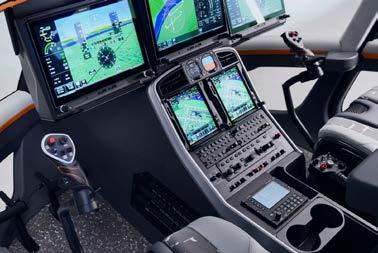
result has been overwhelmingly positive. Smith said, “I think that people were surprised by how much we’ve put into making it a beautiful and comfortable aircraft, but one that has the best empty weight in its class and one that’s going to produce superior returns for them.”
For those who can’t wait, Robinson is taking deposits on the R88.
At the unveiling of the R88, Smith said, “We expect to disrupt the single engine helicopter market, offering superior performance and capabilities at a competitive price. We have a unique opportunity to provide solutions that no other manufacturer can, in a highly capable and affordable helicopter, with

readily available parts and predictable maintenance. This is what our 10,000 plus existing customers have come to expect from Robinson.”
In terms of utility, the wide and flat cabin floor supports both executive and club seating arrangements as well as having more than sufficient space for a HEMS stretcher and support personnel.
Performance from the 10000 shp engine should be more than sufficient for the most arduous hot and high conditions and it has the ability to sling a 3,000 lb load.
Given Robinson’s success as a disputer, and the sales volumes it has achieved, the R88 should be a sure-fire success.


Type: Single-engine turbine helicopter
Capacity: 10 seats (8 passengers, 2 pilots)
Design: Largest and most capable aircraft from Robinson Helicopter
Purpose: HEMS, utility, firefighting, & passenger transport
Cabin: Highly configurable with a flat floor for various mission types
Avionics: Garmin G500H TXi displays and GTN navigators
Autopilot: Standard 4-axis autopilot
Safety: Dual hydraulics for pitch and roll, impactresistant windshields
Certification: Type-certified for single-pilot IFR flying
PERFORMANCE
Engine: Safran Arriel 2W, 1,000 shp
Range: Over 350 nautical miles
Endurance: Exceeding 3.5 hours
Payload: Up to 1,800 pounds with full fuel
Cabin Volume: Approximately 275 cubic feet



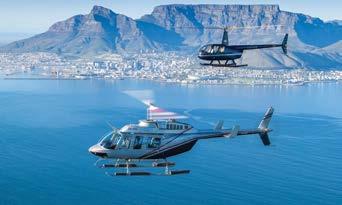

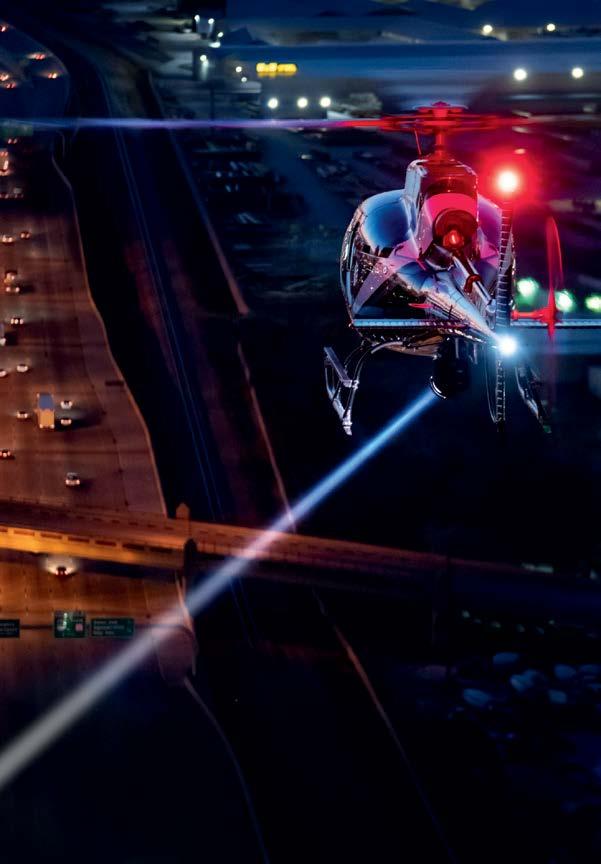
With surveillance and crime-fighting equipment vital to operations, our versatile range of helicopters perform a multitude of critical missions. Supporting law enforcement teams, who in turn support communities, Airbus proudly delivers cutting edge flight technologies that help keep the world a safer place.

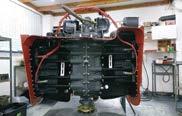

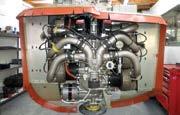
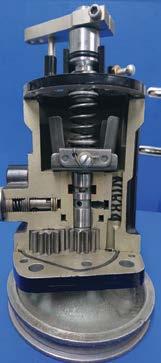






















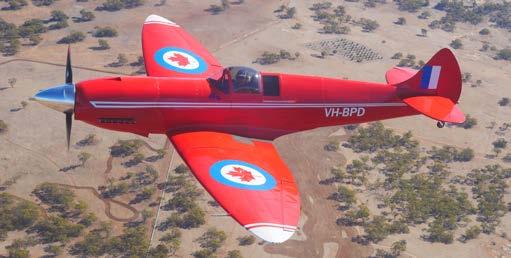
The Jabiru 5100 5-litre 180 hp 8-cylinder engine has a total time of 31.4 hrs and a TBO of 2000 hrs. The engine has SDS electronic fuel injection and is CASA compliant.
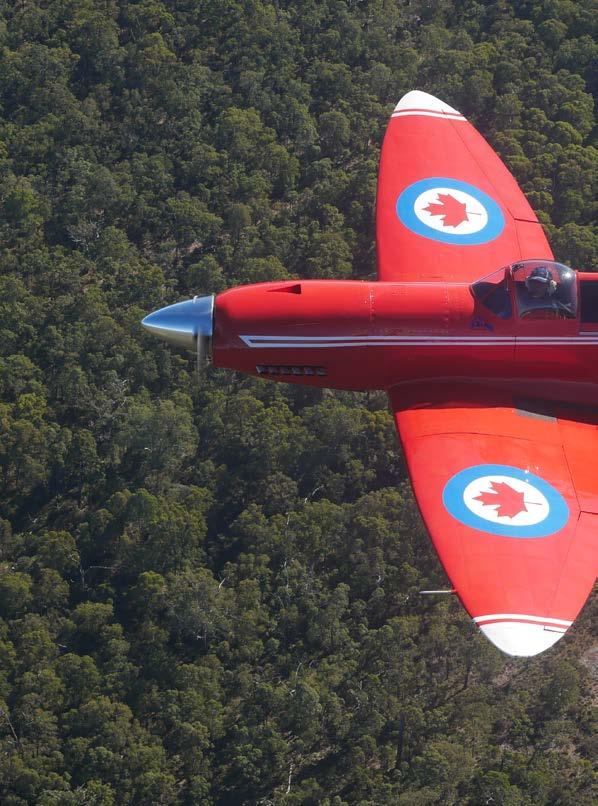
It has 8 new pistons and the cylinders are honed. The engine is running beautifully and sounds fantastic.
This 80% scale Spitfire is amazingly similar to the original.
Included is a refurbished Toyota 1GZ-FE 300 hp V12 engine with an aviation logbook.
Should the plane be bought in South Africa, the seller would be keen to assist in the engine conversion.
Price is negotiable around AU$130,000 and all genuine offers will be considered.









208 Aviation Ben Esterhuizen +27 83 744 3412 / 83 820 1513 ben@208aviation.co.za info@208aviation.co.za www.208aviation.com
A1A Flight Examiner (Loutzavia)
Jannie Loutzis 012 567 6775 / 082 416 4069 jannie@loutzavia.co.za www.loutzavia.co.za
AES (Cape Town)
Erwin Erasmus 082 494 3722 erwin@aeroelectrical.co.za www.aeroelectrical.co.za
AES (Johannesburg) Danie van Wyk 011 701 3200 office@aeroelectrical.co.za www.aeroelectrical.co.za
Aerocolour cc
Alfred Maraun 082 775 9720 www.aeroeng@iafrica.com
Aero Engineering & PowerPlant
Andre Labuschagne 012 543 0948 www.aerocolour@telkomsa.net
Aerokits Jean Crous 072 6716 240 aerokits99@gmail.com
Aeronav Academy Donald O’Connor 011 701 3862 info@aeronav.co.za www.aeronav.co.za
Aeronautical Aviation
Clinton Carroll 011 659 1033 / 083 459 6279 clinton@aeronautical.co.za www.aeronautical.co.za
Aerospace Electroplating
Oliver Trollope 011 827 7535 petasus@mweb.co.za
Aerotel
Martin den Dunnen 087 6556 737 reservations@aerotel.co.za www.aerotel.co.za
Aerotric
Richard Small 083 488 4535 aerotric@aol.com
Aviation Rebuilders cc Lyn Jones 011 827 2491 / 082 872 4117 lyn@aviationrebuilders.com www.aviationrebuilders.com
AVIC International Flight Academy (AIFA)
Theo Erasmus 082 776 8883 rassie@aifa.co.za
Air 2000 (Pty) Ltd
Anne Gaines-Burrill 011 659 2449 - AH 082 770 2480 Fax 086 460 5501 air2000@global.co.za www.hunterssupport.com
Aircraft Finance Corporation & Leasing
Jaco Pietersen +27 [0]82 672 2262 jaco@airfincorp.co.za
Jason Seymour +27 [0]82 326 0147 jason@airfincorp.co.za www.airfincorp.co.za
Aircraft General Spares
Eric or Hayley 084 587 6414 or 067 154 2147 eric@acgs.co.za or hayley@acgs.co.za www.acgs.co.za
Aircraft Maintenance International Pine Pienaar 083 305 0605 gm@aminternational.co.za
Aircraft Maintenance International Wonderboom Thomas Nel 082 444 7996 admin@aminternational.co.za
Air Line Pilots’ Association
Sonia Ferreira 011 394 5310 alpagm@iafrica.com www.alpa.co.za
Airshift Aircraft Sales
Eugene du Plessis 082 800 3094 eugene@airshift.co.za www.airshift.co.za
Alclad Sheetmetal Services
Ed Knibbs 083 251 4601 ed@alclad.co.za www.alclad.co.za
Algoa Flying Club
Sharon Mugridge 041 581 3274 info@algoafc.co.za www.algoafc.co.za
Alpi Aviation SA Dale De Klerk 082 556 3592 dale@alpiaviation.co.za www.alpiaviation.co.za
Apco (Ptyd) Ltd Tony/Henk + 27 12 543 0775 apcosupport@mweb.co.za www.apcosa.co.za
Ardent Aviation Consultants
Yolanda Vermeulen 082 784 0510 yolanda@ardentaviation.co.za www.ardentaviation.co.za
Ascend Aviation
Marlo Kruyswijk 079 511 0080 marlo@ascendaviation.co.za www.ascendaviation.co.za
Atlas Aviation Lubricants
Steve Cloete 011 917 4220 Fax: 011 917 2100 sales.aviation@atlasoil.co.za www.atlasaviation.co.za
AVDEX (Pty) Ltd
Tania Botes 011 954 15364 info@avdex.co.za www.avdex.co.za
Aviatech Flight Academy
Nico Smith 082 303 1124 viatechfakr@gmail.com www.aviatech.co.za
Aviation Direct
Andrea Antel 011 465 2669 info@aviationdirect.co.za www.aviationdirect.co.za
Avtech
Riekert Stroh 082 749 9256 avtech1208@gmail.com
BAC Aviation AMO 115
Micky Joss 035 797 3610 monicad@bacmaintenance.co.za
Blackhawk Africa
Cisca de Lange 083 514 8532 cisca@blackhawk.aero www.blackhawk.aero
Blue Chip Flight School
Henk Kraaij 012 543 3050 bluechip@bluechip-avia.co.za www.bluechipflightschool.co.za
Border Aviation Club & Flight School
Liz Gous 043 736 6181 admin@borderaviation.co.za www.borderaviation.co.za
Bona Bona Game Lodge MJ Ernst 082 075 3541 mj@bonabona.co.za www.bonabona.co.za
Breytech Aviation cc 012 567 3139 Willie Breytenbach admin@breytech.co.za
Celeste Sani Pak & Inflight Products
Steve Harris 011 452 2456 admin@chemline.co.za www.chemline.co.za
Cape Town Flying Club
Beverley Combrink 021 934 0257 / 082 821 9013 info@capetownflyingclub.co.za www.capetownflyingclub.co.za
Cape Town Flight Training Centre
Frans 021 976 7053 admin@cape-town-flying.co.za www.cape-town-flying.co.za
Capital Air
Tanya Vinagre 011 827 0335 / 083 928 7265 tanya@capitalairsa.com www.capitalairsa.com
Century Avionics cc Carin van Zyl 011 701 3244 sales@centuryavionics.co.za www.centuryavionics.co.za
Chemetall
Wayne Claassens 011 914 2500 wayne.claassens@basf.com www.chemetall.com
Chem-Line Aviation & Celeste Products
Steve Harris 011 452 2456 sales@chemline.co.za www.chemline.co.za
Clifton Electronics cc CJ Clifton / Irene Clifton 079 568 7205 / 082 926 8482 clive.iclifton@gmail.com
Comair Flight Services (Pty) Ltd Reception +27 11 540 7640/FAX: +27 11 252 9334 hello@flycfs.com www.flycfs.com
Corporate-Aviators/Affordable Jet Sales Mike Helm 082 442 6239 corporate-aviators@iafrica.com www.corporate-aviators.com
CSA Aviation – Cirrus South Africa Alex Smith 011 701 3835 alexs@cirrussa.co.za www.cirrussa.co.za
C. W. Price & Co
Kelvin L. Price 011 805 4720 cwp@cwprice.co.za www.cwprice.co.za
Dart Aeronautical Pieter Viljoen 011 827 0371 pieterviljoen@dartaero.co.za www.dartaero.co.za
Dart Aircraft Electrical Mathew Joubert 011 827 0371 Dartaircraftelectrical@gmail.com www.dartaero.co.za
Diepkloof Aircraft Maintenance cc Nick Kleinhans 083 454 6366 diepkloofamo@gmail.com
DJA Aviation Insurance 011 463 5550 0800Flying mail@dja-aviation.co.za www.dja-aviation.co.za
Dynamic Propellers
Andries Visser 011 824 5057 082 445 4496 andries@dynamicpropeller.co.za www.dynamicpropellers.co.za
Eagle Flight Academy
Mr D. J. Lubbe 082 557 6429 training@eagleflight.co.za www.eagleflight.co.za
Execujet Africa 011 516 2300 enquiries@execujet.co.za www.execujet.com
Federal Air Rachel Muir 011 395 9000 shuttle@fedair.com www.fedair.com
Ferry Flights int.inc. Michael (Mick) Schittenhelm 082 442 6239 ferryflights@ferry-flights.com www.ferry-flights.com
F Gomes Upholsters
Carla de Lima 083 602 5658 delimaCarla92@gmail.com
Fireblade Aviation 010 595 3920 info@firebladeaviation.com www.firebladeaviation.com
Flight Training College Cornell Morton 044 876 9055 ftc@flighttrainning.co.za www.flighttraining.co.za
Flight Training Services Amanda Pearce 011 805 9015/6 amanda@fts.co.za www.fts.co.za
Fly Jetstream Aviation Henk Kraaij 083 279 7853 charter@flyjetstream.co.za www.flyjetstream.co.za
Flying Unlimited Flight School (Pty) Ltd Riaan Struwig 082 653 7504 / 086 770 8376 riaan@ppg.co.za www.ppg.co.za
Flyonics (Pty) Ltd Michael Karaolis 010 109 9405 michael@flyonics.co.za www.flyonics.co.za
Gemair Andries Venter 011 701 2653 / 082 905 5760 andries@gemair.co.za
GIB Aviation Insurance Brokers
Richard Turner 011 483 1212 aviation@gib.co.za www.gib.co.za
Guardian Air 011 701 3011 082 521 2394 ops@guardianair.co.za www.guardianair.co.za
Heli-Afrique cc Tino Conceicao 083 458 2172 tino.conceicao@heli-afrique.co.za
Henley Air
Andre Coetzee 011 827 5503 andre@henleyair.co.za www.henleyair.co.za
Hover Dynamics
Phillip Cope 074 231 2964 info@hover.co.za www.hover.co.za
Indigo Helicopters Gerhard Kleynhans 082 927 4031 / 086 528 4234 veroeschka@indigohelicopters.co.za www.indigohelicopters.co.za
IndigoSat South Africa - Aircraft Tracking
Gareth Willers 08600 22 121 sales@indigosat.co.za www.indigosat.co.za
International Flight Clearances
Steve Wright 076 983 1089 (24 Hrs) flightops@flyifc.co.za www.flyifc.co.za
Investment Aircraft
Quinton Warne 082 806 5193 aviation@lantic.net www.investmentaircraft.com
Jabiru Aircraft
Len Alford 044 876 9991 / 044 876 9993 info@jabiru.co.za www.jabiru.co.za
Jim Davis Books
Jim Davis 072 188 6484 jim@border.co.za www.jimdavis.co.za
Joc Air T/A The Propeller Shop
Aiden O’Mahony 011 701 3114 jocprop@iafrica.com
Johannesburg Flying Academy
Alan Stewart 083 702 3680 info@jhbflying.co.za www.jhbflying.co.za
Kishugu Aviation +27 13 741 6400 comms@kishugu.com www.kishugu.com/kishugu-aviation
Khubenker Energy (Pty) Ltd T/A Benveroy
Vernon Bartlett 086 484 4296 vernon@khubenker.co.za www.khubenker.co.za
Kit Planes for Africa
Stefan Coetzee 013 793 7013 info@saplanes.co.za www.saplanes.co.za
Kzn Aviation (Pty) Ltd
Melanie Jordaan 031 564 6215 mel@kznaviation.co.za www.kznaviation.co.za
Lanseria Aircraft Interiors
Francois Denton 011 659 1962 / 076 810 9751 francois@aircraftcompletions.co.za
Lanseria Flight Centre
Ian Dyson Tel: +27 11 312 5166, F: +27 11 312 5166 ian@flylfc.com www.flylfc.com
Lanseria International Airport
Mike Christoph 011 367 0300 mikec@lanseria.co.za www.lanseria.co.za
Leading Edge Aviation cc
Peter Jackson Tel 013 741 3654 Fax 013 741 1303 office@leaviation.co.za www.leadingedgeaviation.co.za
Legend Sky 083 860 5225 / 086 600 7285 info@legendssky.co.za www.legendsky.co.za
Litson & Associates (Pty) Ltd
OGP/BARS Auditing & Advisory Services & Aviation Safety Training
Email: Phone:enquiries@litson.co.za 27 (0) 8517187 www.litson.co.za
Litson & Associates Risk Management Services (Pty) Ltd
eSMS-S™/ eTENDER/ e-REPORT / Aviation Software Systems
Email: Phone:enquiries@litson.co.za 27 (0) 8517187 www.litson.co.za
Loutzavia Aircraft Sales
Henry Miles 082 966 0911 henry@loutzavia.co.za www.loutzavia.co.za
Loutzavia Flight Training
Gerhardt Botha 012 567 6775 ops@loutzavia.co.za www.loutzavia.co.za
Loutzavia-Pilots and Planes
Maria Loutzis 012 567 6775 maria@loutzavia.co.za www.pilotsnplanes.co.za
Loutzavia Rand Frans Pretorius 011 824 3804 rand@loutzavia.co.za www@loutzavia.co.za
Lowveld Aero Club
Pugs Steyn 013 741 3636 Flynow@lac.co.za
Maverick Air Charters
Lourens Human 082 570 2743 ops@maverickair.co.za www.maverickair.co.za
MCC Aviation Pty Ltd
Claude Oberholzer 011 701 2332 info@flymcc.co.za www.flymcc.co.za
Mistral Aviation Services
Peter de Beer 083 208 7249 peter@mistral.co.za
MH Aviation Services (Pty) Ltd
Marc Pienaar 011 609 0123 / 082 940 5437 customerrelations@mhaviation.co.za www.mhaviation.co.za
M and N Acoustic Services cc Martin de Beer 012 689 2007/8 calservice@mweb.co.za
Metropolitan Aviation (Pty) Ltd
Gert Mouton 082 458 3736 herenbus@gmail.com
Money Aviation Angus Money 083 263 2934 angus@moneyaviation.co.za www.moneyaviation.co.za
Mont Blanc Financial Services
Devon Ford 0800 467 873 info@mbfs.co.za www.mbfs.co.za
MS Aviation Gary 082 563 9639 gary.templeton@msaviation.co.za
North East Avionics
Keith Robertson +27 13 741 2986 keith@northeastavionics.co.za deborah@northeastavionics.co.za www.northeastavionics.co.za
Orsmond Aviation 058 303 5261 info@orsmondaviation.co.za www.orsmondaviation.co.za
Owenair (Pty) Ltd
Clive Skinner 082 923 9580 clive.skinner@owenair.co.za www.owenwair.co.za
Par-Avion Exclusive Catering
Jakkie Vorster 011 701 2600 accounts@par-avion.co.za www.par-avion.co.za
PFERD-South Africa (Pty) Ltd Hannes Nortman 011 230 4000 hannes.nortman@pferd.co.za www.pferd.com
Plane Maintenance Facility
Johan 083 300 3619 pmf@myconnection.co.za
Powered Flight Charters
Johanita Jacobs Tel 012 007 0244/Fax 0866 66 2077 info@poweredflight.co.za www.poweredflight.co.za
Powered Flight Training Centre
Johanita Jacobs Tel 012 007 0244/Fax 0866 66 2077 info@poweredflight.co.za www.poweredflight.co.za
Precision Aviation Services
Marnix Hulleman 012 543 0371 marnix@pasaviation.co.za www.pasaviation.co.za
Propeller Centre
Theuns du Toit +27 12 567 1689 / +27 71 362 5152 theuns@propcentre.co.za www.propcentre.com
Rainbow SkyReach (Pty) Ltd
Mike Gill 011 817 2298 Mike@fly-skyreach.com www.fly-skyreach.com
Rand Airport Kevin van Zyl Kevin@horizonrisk.co.za +27 76 801 5639 www.randairport.co.za
Dr Rudi Britz Aviation Medical Clinic Megan 066 177 7194 rudiavmed@gmail.com Wonderboom Airport
SAA Technical (SOC) Ltd SAAT Marketing 011 978 9993 satmarketing@flysaa.com www.flysaa.com/technical
SABRE Aircraft
Richard Stubbs 083 655 0355 richardstubbs@mweb.co.za www.aircraftafrica.co.za
Savannah Helicopters
De 082Jager 444 1138 / 044 873 3288 dejager@savannahhelicopters.co.za www.savannahhelicopters.co.za
Scenic Air
Christa van Wyk +264 612 492 68 windhoek@scenic-air.com www.scenic-air.com
Sheltam Aviation Durban
Susan Ryan 083 505 4882 susanryan@sheltam.com www.sheltamaviation.com
Sheltam Aviation PE Brendan Booker 082 497 6565 brendanb@sheltam.com www.sheltamaviation.com
Signature Flight Support Cape Town
Alan Olivier 021 934 0350 cpt@signatureflight.co.za www.signatureaviation.com/locations/CPT
Signco (Pty Ltd)
Archie Kemp Tel 011 452 6857 Fax 086 504 5239 info@signco.zo.za www.signco.co.za
Skytrim
Rico Kruger +27 11 827 6638 rico@skytrim.co.za www.skytrim.co.za
SleepOver Michael Richardson 010 110 9900 michael.richardson@sleepover-za.com www.sleepover-za.com
Sling Aircraft Kim Bell-Cross 011 948 9898 sales@airplanefactory.co.za www.airplanefactory.co.za
Solenta Aviation (Pty Ltd) Paul Hurst 011 707 4000 info@solenta.com www.solenta.com
Southern Energy Company (Pty) Ltd Elke Bertram +264 8114 29958 johnnym@sec.com.na www.sec.com.na
Southern Rotorcraft cc Mr Reg Denysschen Tel no: 021 935 0980 execheli@iafrica.com www.rotors-r-us.com
Starlite Aero Sales
Klara Fouché +27 83 324 8530 / +27 31 571 6600 klaraf@starliteaviation.com www.starliteaviation.com
Starlite Aviation Operations
Trisha Andhee +27 82 660 3018/ +27 31 571 6600 trishaa@starliteaviation.com www.starliteaviation.com
Starlite Aviation Training Academy
Durban: +27 31 571 6600 Mossel Bay: +27 44 692 0006 train@starliteaviation.com www.starliteaviation.com
Status Aviation (Pty) Ltd
Richard Donian 074 587 5978 / 086 673 5266 info@statusaviation.co.za www.statusaviation.co.za
Superior Pilot Services
Liana Jansen van 0118050605/2247Rensburg info@superiorair.co.za www.superiorair.co.za
Swift Flite
Linda Naidoo Tel 011 701 3298 Fax 011 701 3297 info@swiftflite.com / linda@swiftflite.com www.swiftflite.co.za
The Aviation Shop Karel Zaayman 010 020 1618 info@aviationshop.co.za www.aviationshop.co.za
The Copter Shop Bill Olmsted 082 454 8555 execheli@iafrica.com www.execheli.wixsite.com/the-copter-shop-sa
The Pilot Shop Helen Bosland 082 556 3729 helen@pilotshop.co.za www.pilotshop.co.za
Titan Helicopter Group 044 878 0453 info@titanhelicopters.com www.titanhelicopters.com
Top Flight Academy Nico Smith 082 303 1124 topflightklerksdorp@gmail.com
Turbo Prop Service Centre 011 701 3210 info@tpscsa.co.za www.tpscsa.co.za
Ultimax Aviation (Pty) Ltd Aristide Loumouamou +27 72 878 8786 aristide@ultimax-aviation.com www.ultimax-aviation.com
United Charter cc Jonathan Wolpe 083 270 8886 jonathan.wolpe@unitedcharter.co.za www.unitedcharter.co.za
United Flight Support Clinton Moodley/Jonathan Wolpe 076 813 7754 / 011 788 0813 ops@unitedflightsupported.com www.unitedflightsupport.com
Velocity Aviation Collin Pearson 011 659 2306 / 011 659 2334 collin@velocityaviation.co.za www.velocityaviation.co.za
Villa San Giovanni Luca Maiorana 012 111 8888 info@vsg.co.za www.vsg.co.za
Vortx Aviation Bredell Roux 072 480 0359 info@vortx.co.za www.vortxaviation.com
Wanafly Adrian Barry 082 493 9101 adrian@wanafly.net www.wanafly.co.za
Windhoek Flight Training Centre
Thinus Dreyer 0026 40 811284 180 pilots@flywftc.com www.flywftc.com
Wings n Things Colin Blanchard 011 701 3209 wendy@wingsnthings.co.za www.wingsnthings.co.za
Witbank Flight School Andre De Villiers 083 604 1718 andredv@lantic.net www.waaflyingclub.co.za
Wonderboom Airport
Peet van Rensburg 012 567 1188/9 peet@wonderboomairport.co.za www.wonderboomairport.co.za
Zandspruit Bush & Aero Estate
Martin Den Dunnen 082 449 8895 martin@zandspruit.co.za www.zandspruit.co.za
Zebula Golf Estate & SPA Reservations 014 734 7700 reception@zebula.co.za www.zebula.co.za

